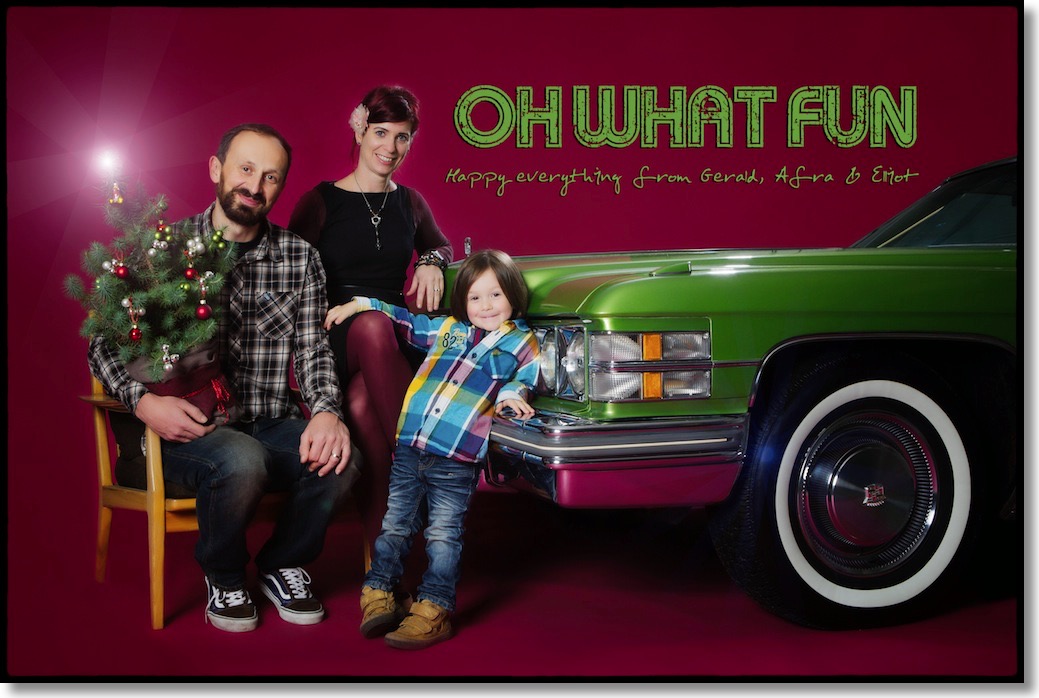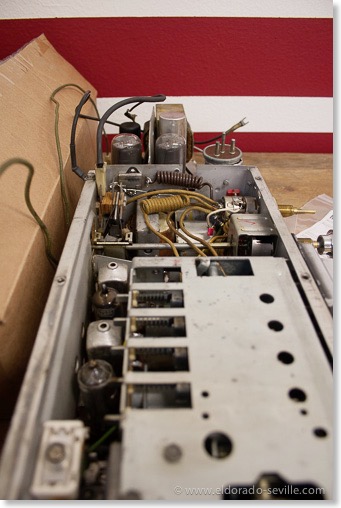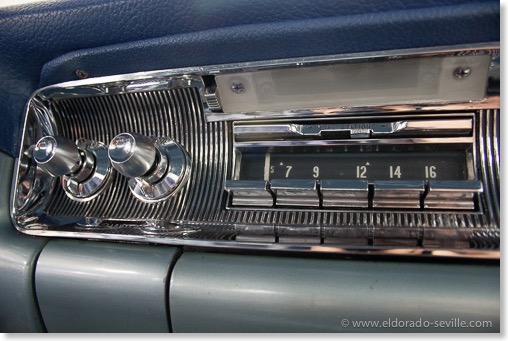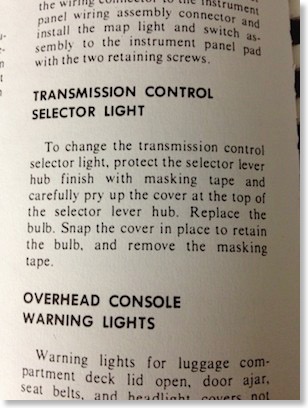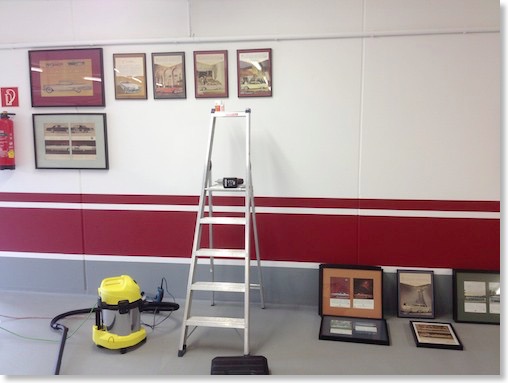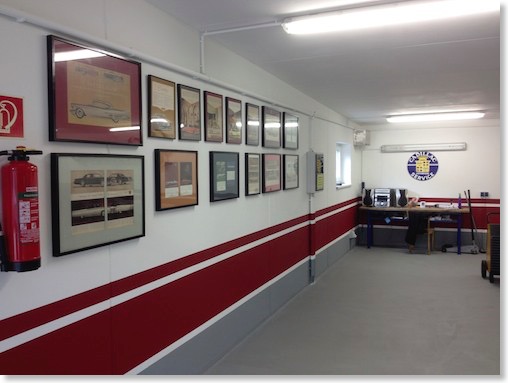1967 AND 1968 CADILLAC ELDORADO HEADLIGHT ACTUATOR REPAIR ARTICLE UPDATED
After many years they tend to fail for many owners of the 1967 and 1968 Eldorados.
One company has offered a reproduction, but from the experience some people made with it, it was said that it was very poorly made and extremely expensive. I can´t tell anything about it from my own experience though.
But there is a better and much cheaper solution to the problem in the form of a modified reproduction 1969 Camaro RS actuator which is readily available. I´ve written an article a couple of years ago what could be done and I have now updated it, as one reader sent me some excellent description and pictures of how he modified the Camaro actuator to work perfectly on his 1968 Eldorado.
Thanks for the tip Mark Maromonte from Marks Truck and Auto Repair.
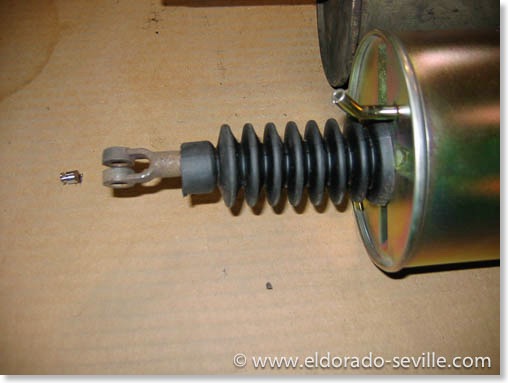
Click on the picture to go to the updated article.
HAPPY HOLIDAYS
TRYING TO REPAIR THE SEAT BACK LOCK MECHANISM ON THE 1974 CADILLAC
They are actuated by big solenoids which are mounted in the back rest of each front seat.
When you open the door they are actuated, and the seat backs can be folded forwards to allow access to the backseats without having to manually unlock the seat. You can hear this "Automatic Seat Back Release" working when you open or close the according door.
It worked perfectly on the passenger side, and most of the time on the driver side.
When the door was open though you could sometimes hear a rattling sound from the solenoid as it did not make good contact.
That was not acceptable for my standards of course.
You have to remove most of the back seat material to get to the solenoid unfortunately.
Once we got it out, we took the solenoid apart. Some of the actuators insulation foam had crumbled inside the end stop of the solenoid - so we replaced that, cleaned and lubricated everything, and put it back together.
Unfortunately the problem was still there after this.
So we eventually found out that the striker where the seat latches, was not adjusted correctly. Something must have gone wrong at the factory already.
We had to modify it slightly to make it perfect again, so that the solenoid could disengage itself properly when the seat back was in the back position.
When everything was back together it worked for a while before it broke again. I will have to find a good working solenoid now and replace it once again.
UPDATE: You can read about the final repair here!
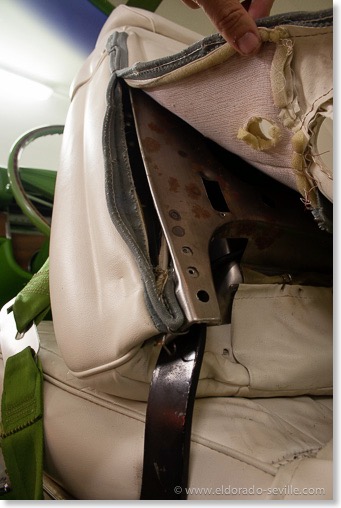
You have to remove the seat back material to be able to access the solenoid and latch mechanism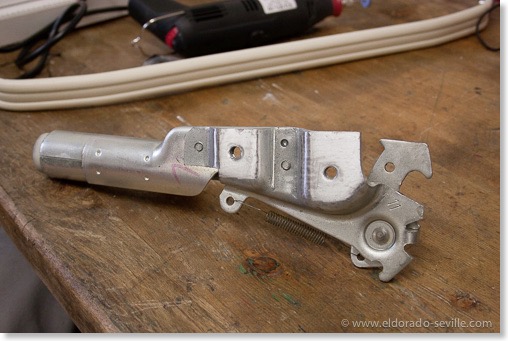
The latch mechanism
The solenoid disassembled - before cleaning - there are two coils inside.
A quick drawing of how the system works.
REPAIRING THE WONDERBAR RADIO OF THE 1958 CADILLAC SEVILLE
Another Cadillac fan I know who likes to try to repair old things and especially older tube radios wanted to give it a try. So the radio came out of the dash.
After his first investigation it soon turned out that the vibrator inside the radio was inoperative.
We could not find a new one - so he decided to cut the aluminum tube with the vibrator inside open.
He ordered a couple of other parts and somehow managed to repair the original vibrator.
I have no clue how he managed to do that and what he did exactly - but I now have a working AM - “Wonderbar" radio inside my 58 Eldorado Seville and for the first time I can proudly say that EVERYTHING works on my 58!
He also managed to repair the speakers on the 1966 and I have a perfectly working radio on this car as well now.
REPAIRING THE CLOCKS OF THE 1958, 1966 AND 1967 CADILLAC
So it was time to service some of the clocks which stopped working over the years.
The clock in the 66 did not work at all.
It's extremely simple to remove on the 66 as you can get it out of the instrument panel by just unscrewing one bolt.
The clock was very dirty in the clock work and needed a good cleaning and some good lubrication. Also the contact of the coil was a little worn and this was fixed. It then happily ticked back to life and now works perfectly.
The clock on my 58 stopped working a couple of years ago. So it came out as well. It's a little more complicated to get it out though...
When it was finally out - it could be seen that the coil was burnt and that it needed some very good cleaning as well. Some of the melted insulation material was all over the clock mechanism and of course I had no spare coil for it - so the original one had to be rewound with some good wire from a left over light solenoid...
Wow - this really took a while - but now the clock works perfectly again!
I was not so lucky with the clock on the 67 Eldorado which only worked when the car was warm. To take it out you have to remove the upper dash and then get out some light bulbs and disconnect it from the printed circuit.
It was also cleaned and lubricated and the clock worked, but it made a very loud noise when the coil rewound the spring of the clock.
The sound got better over night, but then the clock stopped working completely... It's a Westcox clock which uses a double coil and is much more complicated to rebuild than the Borg clocks. Its also almost impossible to find parts for it, as Borg clocks are much more widely used.
Looks like I will need a new 1967 clock and replace it with a Borg unit :-(
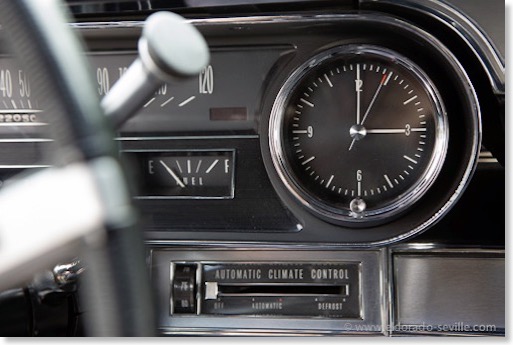
The clock in the 66 is now working perfectly again.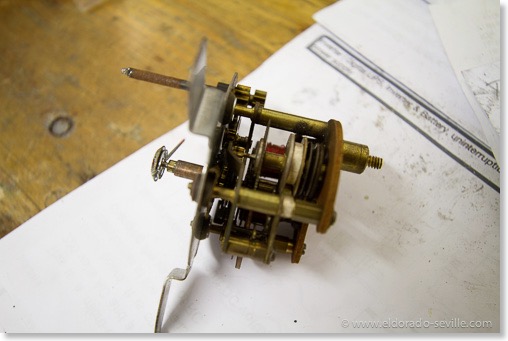
The disassembled clock of the 58 Eldorado.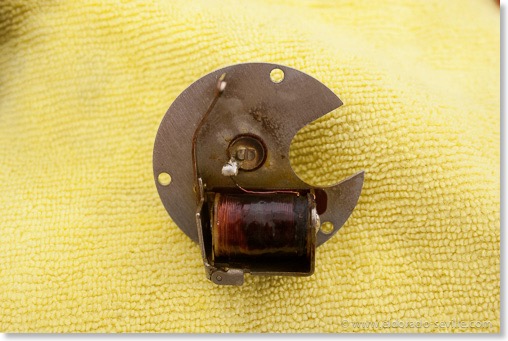
The coil was burnt on the 58 clock.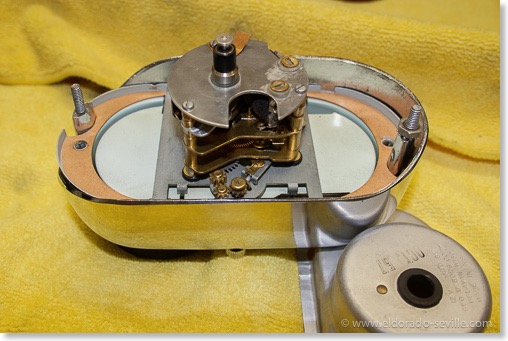
Fully cleaned clock. 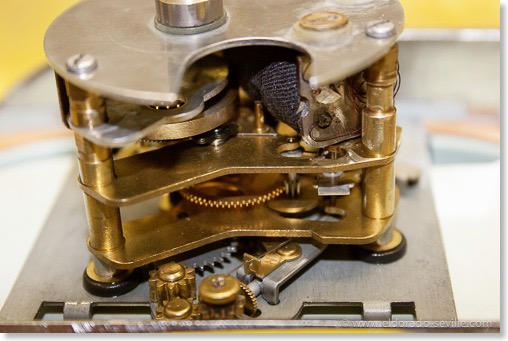
Back together with a rewound coil.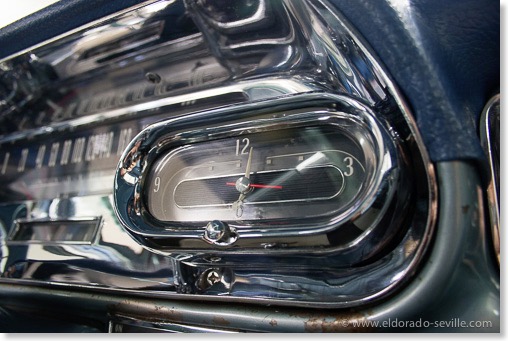
Back in the car - working perfectly again.
REBUILDING THE CRUISE CONTROL OF THE 1966 CADILLAC
Too bad that almost nothing worked when I got the car.
Of course I do not accept any non working things on my cars.
So with the help of another Cadillac aficionado who likes to work with anything electric - we took on the big challenge to repair the “Perfect Circle Cruise Control“ of the 66.
We had no idea how it worked and only had the shop manual as a reference.
The speed reminder function did kind of work, but the cruise control function was completely inoperative.
It took us a couple of days to fix it properly and now it works like the day the car left the factory!
We encountered a multitude of problems:
- 1) The dash mounted switch was defective - the plastic gear to set the desired speed was broken.
- 2) Most of the contacts inside the unit were oxidized
- 3) We had to adjust the contacts inside the unit properly and calibrate the system to the speed set on the dial
- 4) As it turned out later the brake switch was not properly adjusted (we should have checked this first and read the shop manual properly...)
After a lot of trial and error we eventually learned how the system works and we finally could adjust it correctly. It's a very nice system when it works properly, but you really have to calibrate it correctly. It's a fascinating option and there is some great engineering behind it. As it is rather complicated to repair you will see a lot of 60s car without a working cruise control.
Luckily its pretty well described how to adjust the contact points in the shop manual and I should have read it more thoroughly before we started to work on it - it would have saved a lot of time troubleshooting.
UPDATE: Here is the chapter about the Cruise Control from the 1967 Cadillac Shop Manual as a downloadable pdf file. I do no longer have the 1966 manual - thats why I have this document for 67 only. Its very similar to 1966 and differs mainly from the set switch.
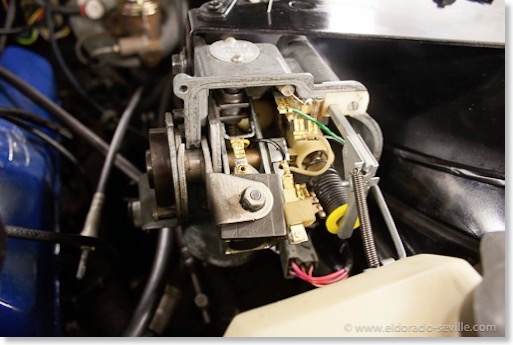
inside the system - still on the car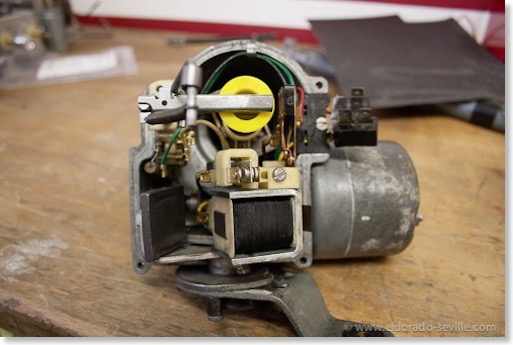
the “perfect circle“ unit on the bench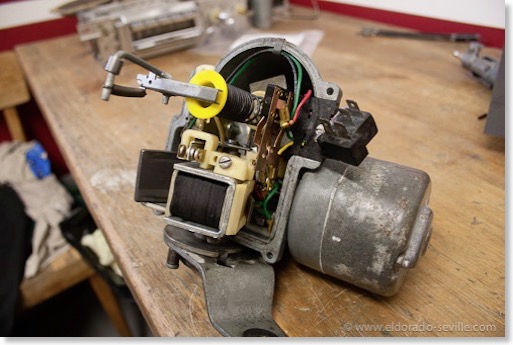
on the bench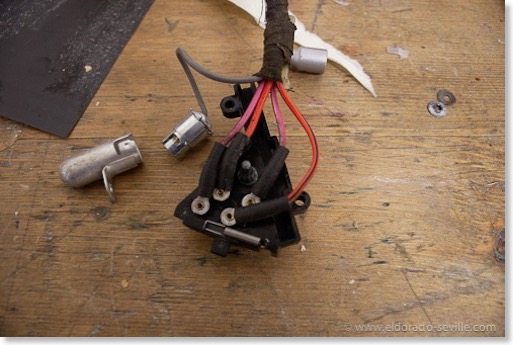
the dash mounted control switch disassembled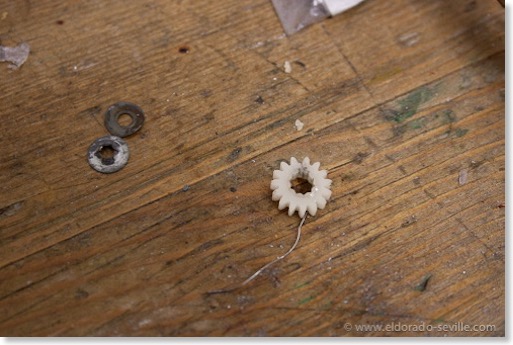
the broken plastic gear before we repaired it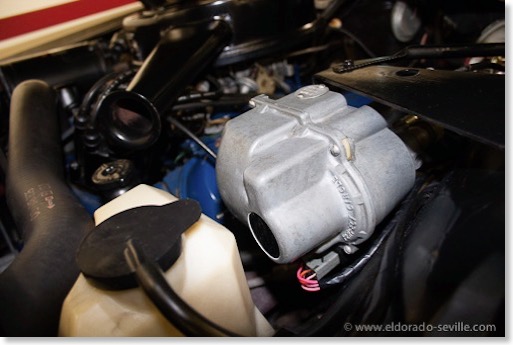
the rebuilt and perfectly cleaned unit - back in the car
REPAIRING THE AIRCONDITION OF THE 1966 COUPE DEVILLE
So I started to search for the cause of the problem.
Everything seemed to be fine on the vacuum side. When the lever on the control panel was moved all the vacuum actuated doors operated and the master vacuum switch also seemed to work.
After some searching I found out that no current was flowing through the master vacuum switch on the firewall.
So the switch was taken apart.
If you do this you have to be very careful not to damage the membrane.
The contacts inside the switch were oxidized and so no more current could flow through.
The contacts were also adjusted so that the switch could engage properly when vacuum was applied.
When everything was put back together the whole system once again worked as it should.
It works absolutely perfect now.
*UPDATE 2022* - Check out this article and video as well!
Unfortunately I forgot to take pictures of the switch rebuild but here is a video on youtube where a gentleman explains how this switch works…
A video that explains how this switch works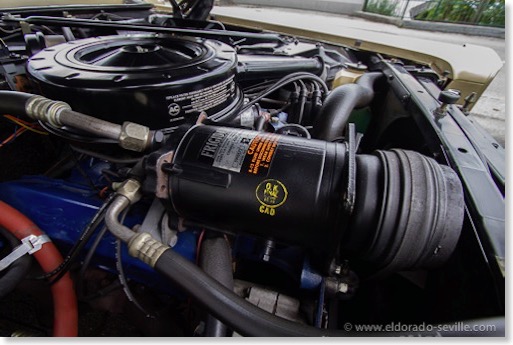
The original AC system of the 1966 Coupe deVille is now working perfectly again.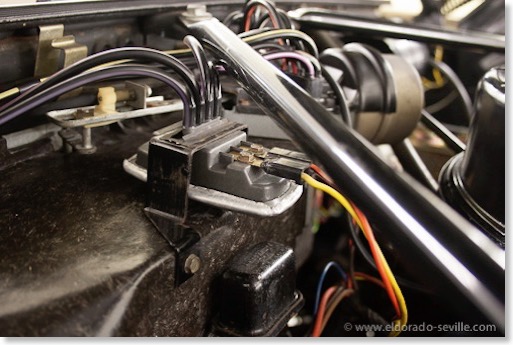
Thats the master vacuum switch which was defective.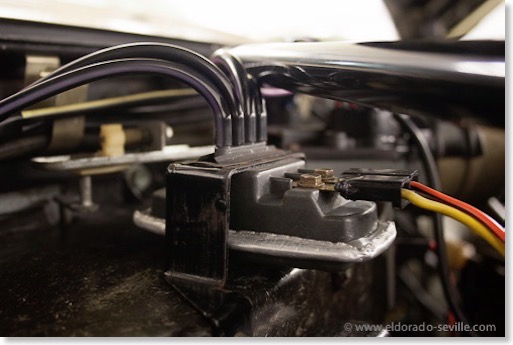
The rebuilt master vacuum switch.
The Cadillac BIG Meet 2014 -great cars but bad weather
This years Cadillac BIG Meet was held from August 23rd to August 24th.
We took the 78 Biarritz to the show.
On friday the preparation work for the meeting began, and also the first cars arrived at the hotel.
You can find some pictures here.
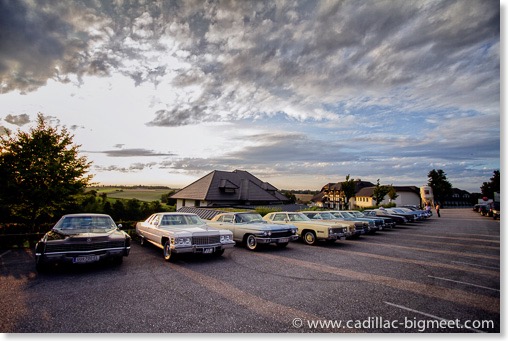
friday evening at the hotel parking lot
On saturday the Driving Tour was held and 59 great Cadillacs participated.
This gallery contains the images from the driving tour which lead us from Kremsmünster to the “Almsee“ for lunch. We then continued to the “Eggenberg“ brewery and back to Kremsmünster where we had dinner in the monastery. As you can see we had some bad luck with the weather...
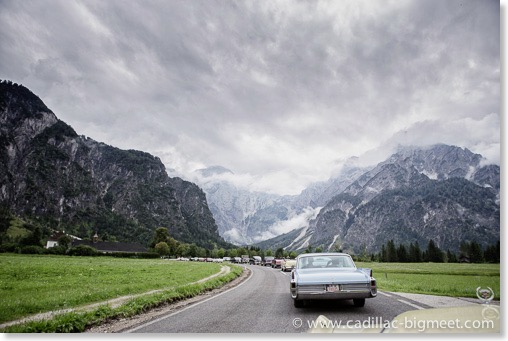
on the way to the “Almsee“ for lunch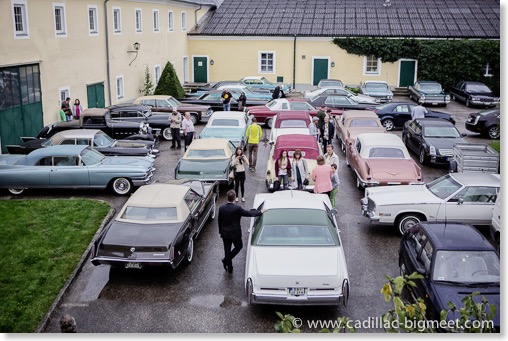
at the brewery
The meeting itself took place on sunday.
Although we had some really bad weather on the Cadillac BIG Meet 2014 weekend, a lot of fantastic Cadillacs attended the 10th anniversary show. We could welcome 130 Cadillacs from 1932 to the most recent models to the show field. In the special exhibition “Cadillac Milestone Cars“ we showed a lot of very important Cadillac models from 1941 until today. Some of the many highlights were 2 59 Eldorado Broughams and a 1957 Eldorado Brougham parked side by side.
We had visitors and participants from 11 nations.
Enjoy the pictures!

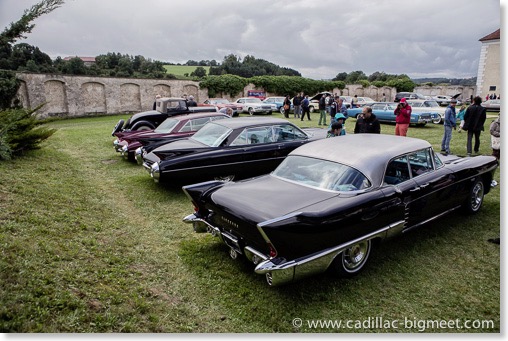
Part of the “Milestone Cars " exhibition. I love the 57 - 60 Eldorado Brougham very much.
The next Cadillac BIG Meet is planned for August 28th 2016.
All pictures were shot by my wife Afra Hämmerle-Loidl and me for the Cadillac BIG Meet organization team.
REPAIRING THE TRANSMISSION SHIFT INDICATOR ON THE 74 CADILLAC

The stuck indicator at the L position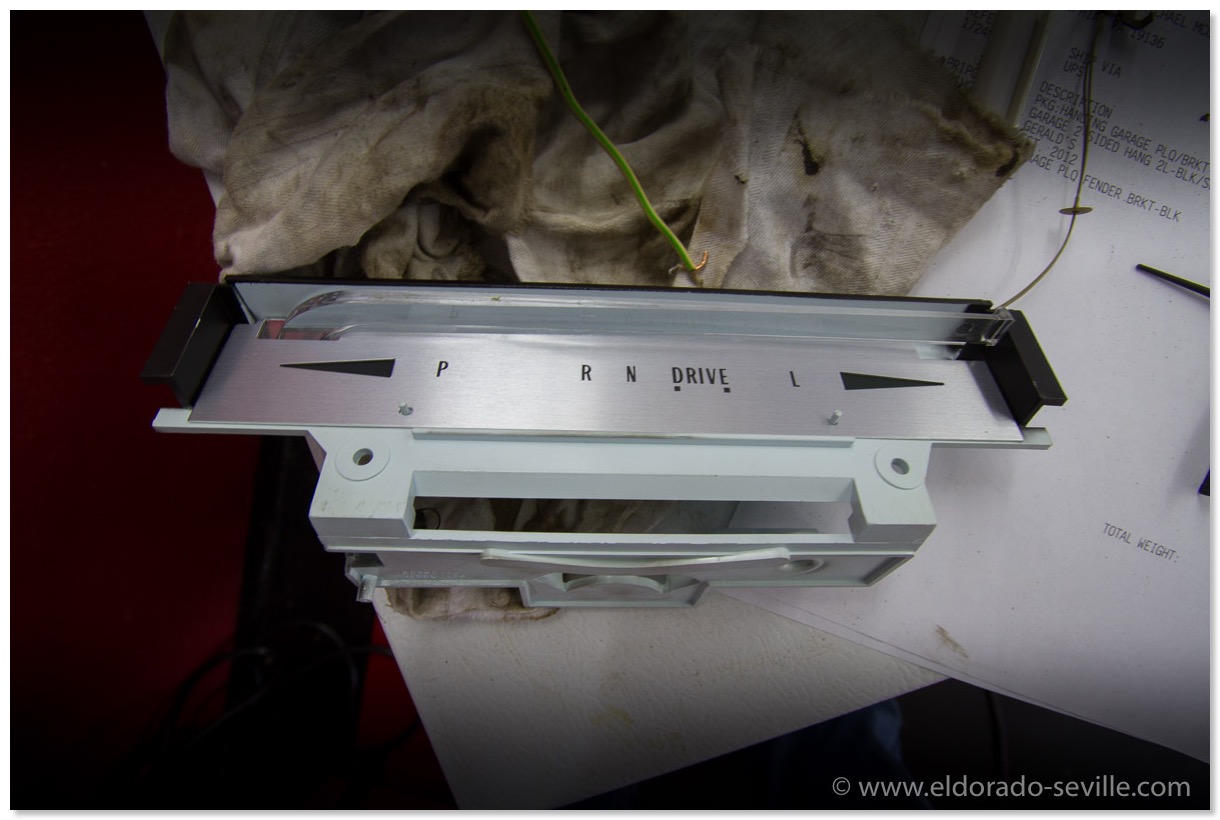
You have disassemble almost the whole speedometer to be able to access the transmission selector dial mechanism. A small part was broken and therefore the spring behind the indicator could no longer work properly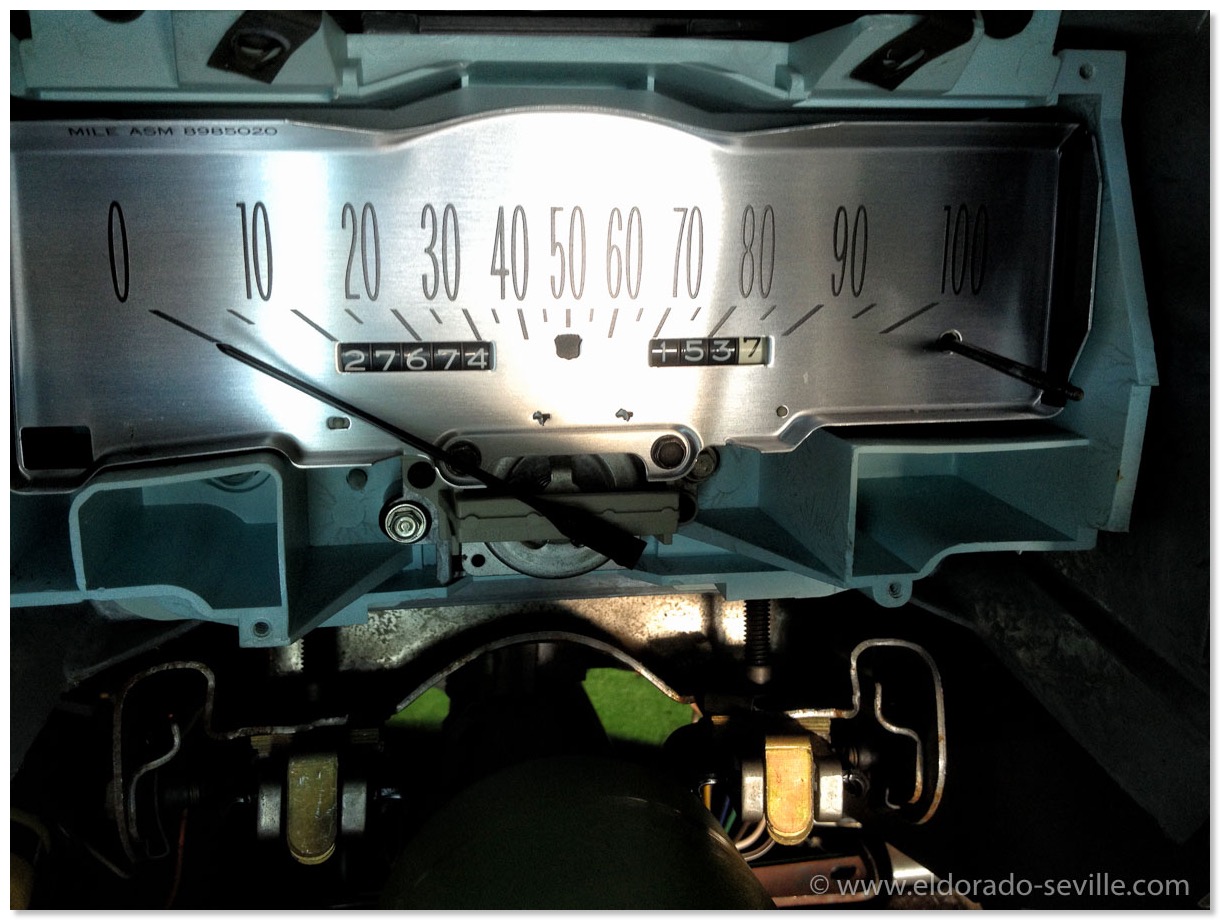
The rest of the speedometer could stay in the car
1966 Cadillac Turn Signal Switch repair
One of the few problems this cars had were some weird issues with the turn signal lights.
I´m a perfectionist and everything has to work on the Cadillacs that are in my garage ;-) - thats one of my rules ;-)
Strange things happened on the right rear and front turn signal lights when the headlights were on or off...
This light switch is made of "unobtainium", so I was pretty scared that it could be broken.
The switch is located underneath the dash and is screwed onto the steering column and is controlled and actuated by a steel cable that is coming from the turn signal lever.
On this car the cable was out of alignment and did not engage the switch correctly on the right side position and this intermediate position of the switch caused the various problems.
It took me quite a while to get the adjustment of the cable right again, as you carefully have to shorten or lengthen it with a nose-plier to get the right length.
I also adjusted the spring you can see on the picture below. This makes the switch more snappy. It now works perfectly and the lever moves much nicer!
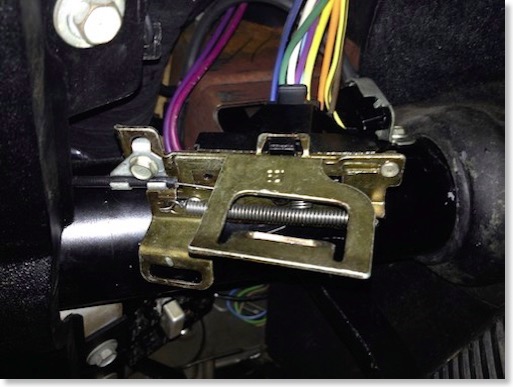
the 1966 Cadillac turn signal switch as seen from underneath the dash - already removed from the steering column.
The 1966 Cadillac Coupe deVille arrived
Wow - talk about a time-capsule! You will very rarely see a car from the 60s in such original low mileage condition.
It normally takes me a couple of weeks to clean and detail a car to my standards - but this car was taken care of so well - that I´ll be able to clean this handsome car within 2 days...
What makes this car so special is of course its originality and awesome condition with the low mileage, but it also is a very loaded car with most of the options that were available back in 1966. One of the coolest option are the power - bucket seats in full black leather with center console.
Also AC, Twilight Sentinel, Automatic dimming, AM-FM radio, Cruise Control, Tilt and Telescope steering - everything is there!
What also makes this car so rare is that it is a slick top - most Coupes were ordered with vinyl tops in 1966. In my personal opinion it looks so much better and more elegant without the vinyl roof!
There is very little patina on the whole cars and one can hardly believe that this car is 48 years old...
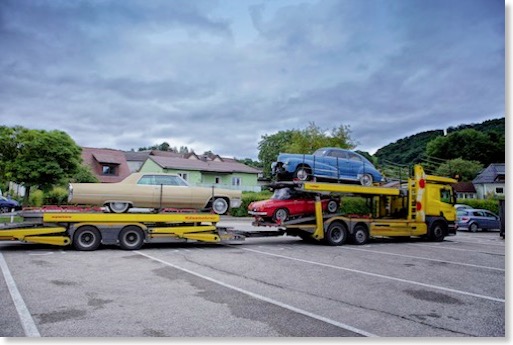
The 66 on the trailer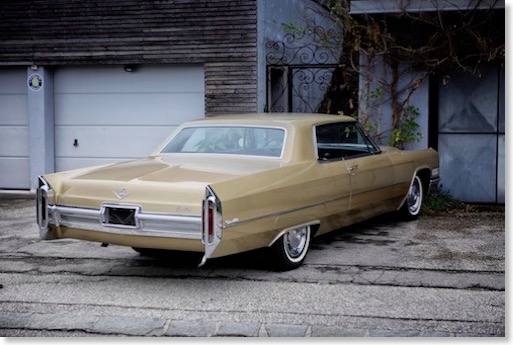
At home in front of the garage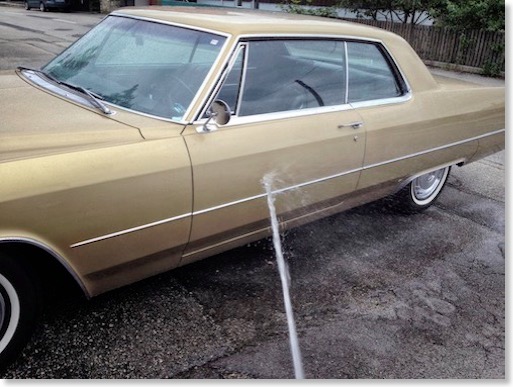
It needed a good shower first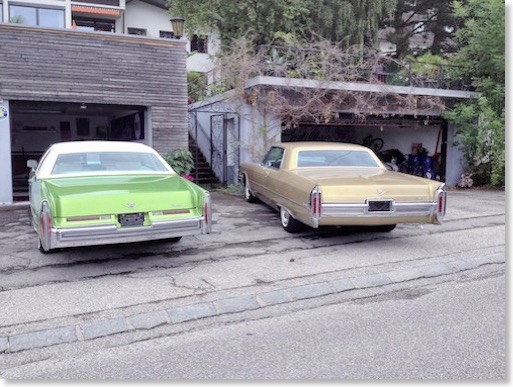
the 74 and the 66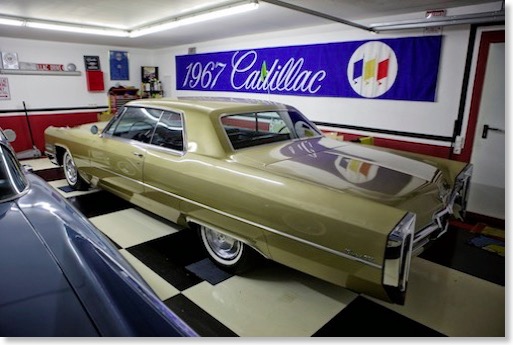
Inside the garage - where it will be brought to my standards now
the 66 and the 58 Eldorado
1967 Eldorado headlights did not work
When I took the car out of the garage I noticed that the headlights did not come on, but the taillights worked.
I suspected that the light switch must be the problem... I unplugged the connector of the switch and tested if 12V power was coming to the switch through the wiring.
There was one hot wire and I connected it directly to the headlights and they came on.
I then wrongfully assumed that the switch must be the problem then...
So I decided to take it out and inspect it.
Getting this switch out is a real pain as there is one screw thats almost impossible to reach. You can only get to the switch from underneath the dash btw...
It took me a couple of hours to get it out lying on my back under the dash...
I then opened up the switch and when I opened it up it fell apart immediately. I had a really hard time getting it back together correctly. Before that I cleaned everything inside.
I measured it with the multimeter and everything was fine.
Getting the switch back into the car was even more difficult than taking it out... There is this one d*mn screw thats almost impossible to get back in. Try to avoid to take the switch out, as you can measure if it works with the multimeter. I did not read the electrical diagrams carefully enough, so I did not measure it correctly and so I took it out.
!!! Be aware that the headlight switch on the 67 Eldorado is almost impossible to find, as it is a very special switch with the vacuum valves! If yours has twilight or auto dimming its even harder to come by!!!
As it turned out my switch was o.k. and the headlights did not work for another unknown reason... So I googled the problem and to my surprise I found my own website with a solution!
I had completely forgotten that I had the very same problem with my headlights a couple of years before and found a solution back then. I was just lucky that I do use my website as a sort of diary for the repairs I do on my cars.
As it turned out the same fusible link had burned through again. It runs very closely to the headers to the starter on the positive battery cable. Maybe it got too hot and failed or just broke apart. I could not see any melting or signs that it had burned through. It looked fully intact from the outside and I could only see that it was defective when I removed the insulation...
To replace the fusible link you have to take out the positive battery cable and replace the fusible link. Thats not a big deal. I rerouted the cables a little bit this time and hope that it wont fail again.
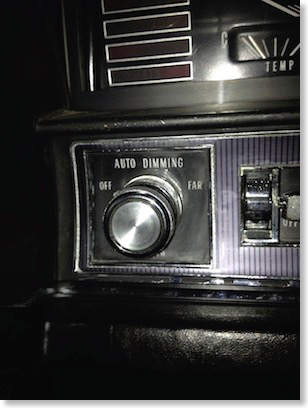
The 1967 headlight switch with automatic dimming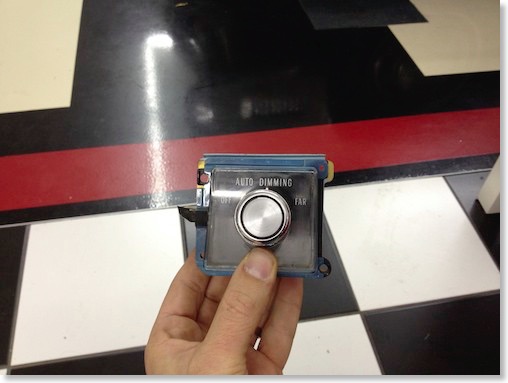
the light switch out of the car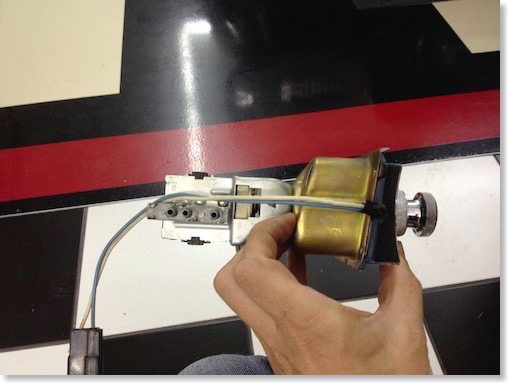
Seen from the side - you can see the vacuum valves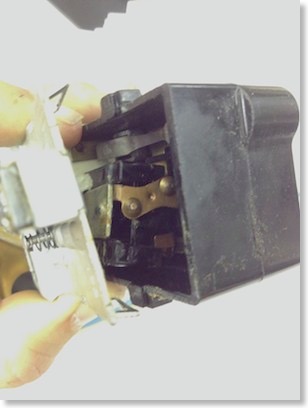
Be very careful if you take the switch apart - as some parts will fall out...
The red cable on top is a fusible link and it caused the problem. I could not see from the outside that it was broken under the insulation.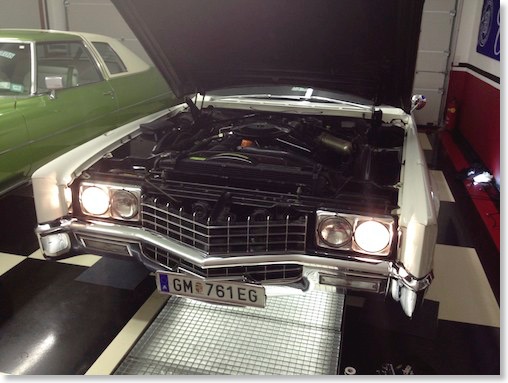
The headlights are back in working order
Changing the transmission indicator bulb on the Lincoln Mark III
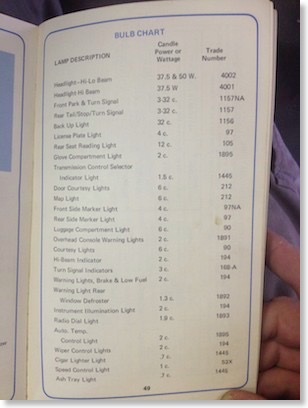
The owners manual lists all the bulbs you need. One should order them by part number.
The shop manual for the Mark III is not very helpful when you try to change the transmission control selector indicator light...
I had no idea where to start so I contacted the excellent Lincolnforum where I got some very helpful tips.
2sasilverbullet sent me the following two pictures below to show what covers have to get removed to be able to access the indicator bulb.
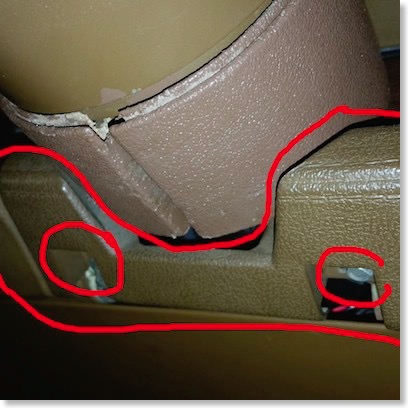
© 2sasilverbullet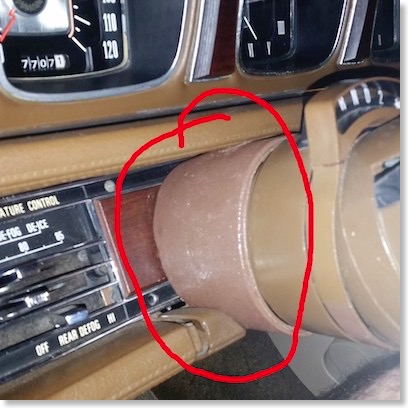
©2sasilverbullet
You have to carefully remove these covers and you then get access to the bulb.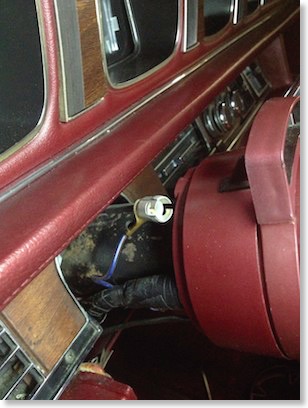
with the bulb already removed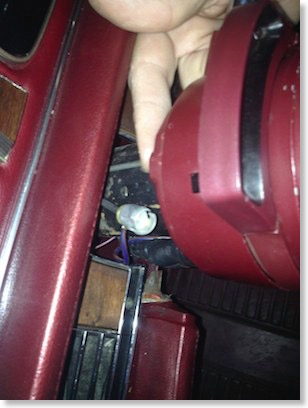
The bulb is then inserted into the hole where you can see the finger.
After the bulb is replaced its pretty tricky to put the covers back into place. Be very careful to not break the plastic covers!
Fixing the 1978 Cadillac Eldorado´s ATC programmer. The AC works again.
****UPDATE****
An update to the article below can be found here as I had to repair the programmer again in May 2015:
The air-condition in my 1978 Biarritz did not work correctly. For some reason the system always stayed in full AC mode and no matter to where I put the temperature dial on the control head I could not get the heat on, no matter what I tried.
The shop manual is very helpful in trouble shooting the system. Its covered in the 1977 factory shop manual (FSM) as there were no changes made to the system in 1978.
It took me a while to fully understand how the system works - so I had to read the FSM multiple times to get the grip what is going on in the system.
First I inspected all the vacuum lines in the car to make sure that there was no leak anywhere, as the heating mode requires a very high vacuum at the vacuum motor in the controller.
All lines were in very good condition. I also checked the control head connections in the dash which were good as well.
I then suspected the vacuum motor in the programmer as it did not move. I removed the programmer from the car. You can access it from underneath the dash on the passenger side or even better if you remove the glove box lining through the glove box.
From there you only have to unscrew 5 screws, unplug the wires and the vacuum lines to get it out.
When I had it out of the car I checked the vacuum motor. I just sucked air through the hose and it moved and held vacuum perfectly.
The transducer or the amplifier in the programmer were most likely the problem.
When I checked the transducer which regulates the vacuum supply to the vacuum motor, I noticed that it seemed to not be connected to the electrical board as it should. I pressed it in, so that it made good contact with the board again and put the programmer back into the car and connected everything again.
***UPDATE 2015 - its not connected with pins but soldered to the circuit board - 3 of this soldering points were broken - the “repair“ I made here only temporarily worked. You have to check the soldering points for a permanent fix***
I started the car and the AC came back to life again immediately. I could see how the vacuum motor went through all the modes as it should according to the position of the temperature dial on the control head.
The build quality of the programmer obviously is not very good and the transducer somehow came loose causing the ATC to not work as it should. ***Update 2015 - it did no come loose but the soldering points broke***
After I tested everything I put the parts back together and can now enjoy a full working ATC in my 78 Biarritz again ;-)
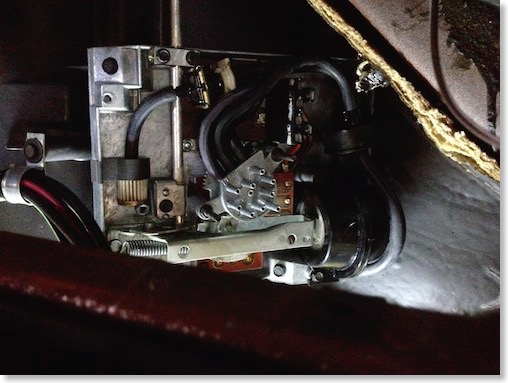
The programmer as seen through the glove box with the connectors and the plastic case removed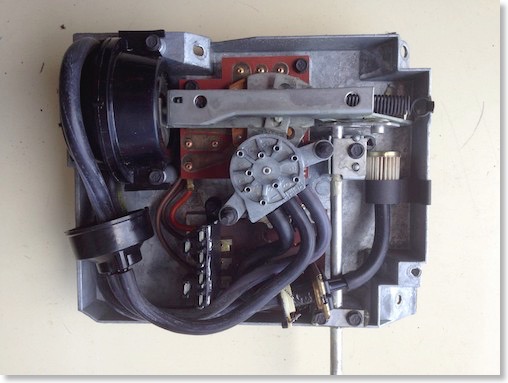
The 1977 / 1978 Eldorado MK II Automatic Temperature Control Programmer
The transducer which caused the problem (the golden part with the single vacuum line going into it)
The transducer is connected to the electrical board through a couple of pins - it was not connected properly and somehow became loose over the years - that was why the system did not work.
***UPDATE 2015 - its not connected with pins but soldered to the circuit board - 3 of this soldering points were broken***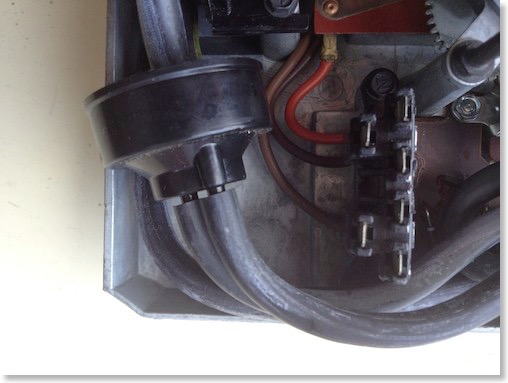
The vacuum checking relay and the electric connectors.
The vacuum power motor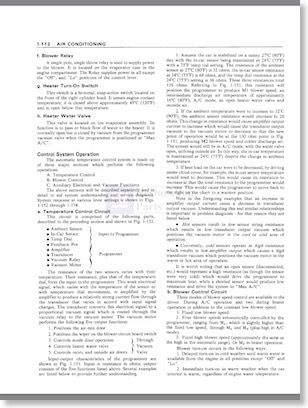
from the 1977 FSM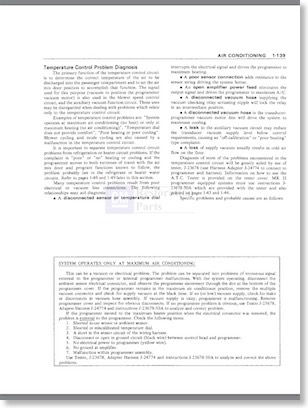
Trouble shooting guide for when the system works in full AC mode only.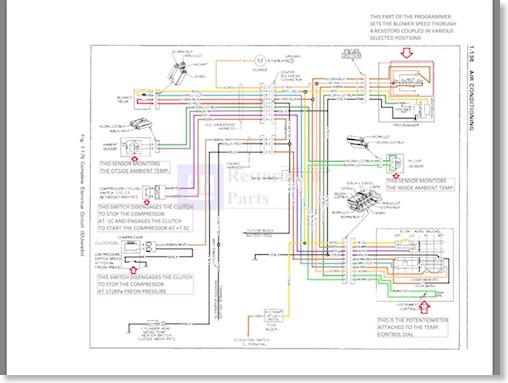
A color coordinated electrical schematic with annotations to describe the various functions of the system.
The Cadillac BIG Meet 2014 - testing the Driving Tour.
Today we tested the driving tour for this years meeting, which will be held on Saturday 23rd of August - the day before the BIG meeting.
Almost all the members of our team took part in the test and we had a great convoy with our cars.
My family and I took the 67 Eldorado for the tour. The tour will be spectacular this year with the most participants we ever had.
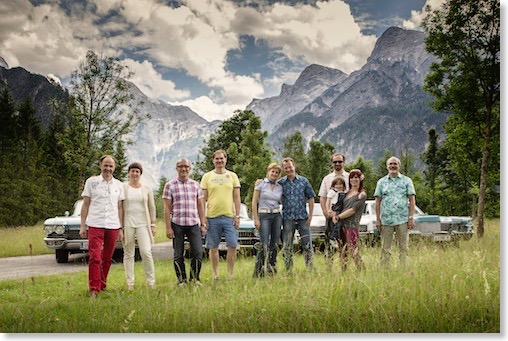
The biggest part of the organization team during the driving tour.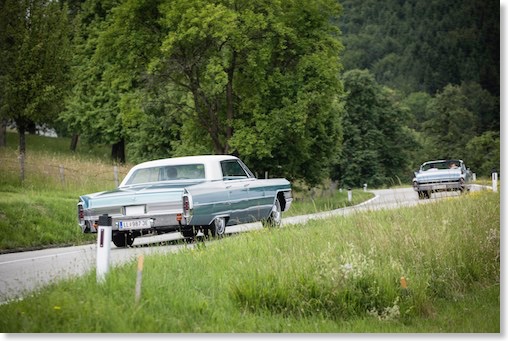
Christian with his 60 Biarritz - followed by Steve and his 65 Sedan deVille.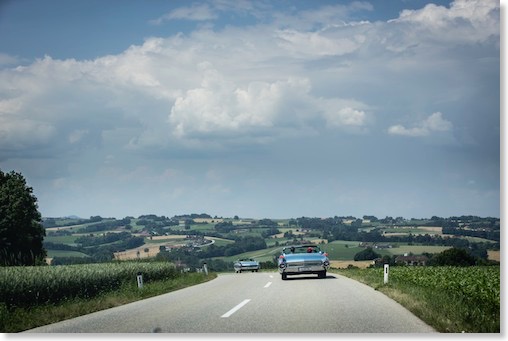
1960 and 1959 Biarritz on the scenic roads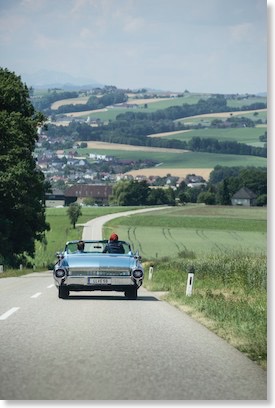
Georg with his 59 Biarritz
Below you can find the press release for the 2014 Cadillac BIG Meet.
* * * Celebrating our first Decade : The 2014 Cadillac BIG Meet * * * The Tenth Cadillac Big Meet at Schloss Kremsegg, Kremsmünster, AustriaSunday, August 24, 2014Historic, scenic and beautiful Kremsmünster welcomes you!For a whole decade now, the friendly little town of Kremsmünster has been the location for the Cadillac BIG Meet. And for a handful of those years, we were able to proudly announce that the city of Kremsmünster is co-organizer of the Big Meet!It is a fine moment when the iconoclastic cultural heritage as presented by Cadillac, the pinnacle of automotive and stylistic engineering in its day, is allowed to assimilate with the historic heritage as presented by Kremsmünster.The pleasing castle grounds of Schloss Kremsegg remain the place to be for everyone admiring the Cadillac car - one area exclusively Cadillacs, the adjoining area for all USA and classic cars.In regards to the show field, it is now the largest yet : plenty of space to park your Cadillac, as well as enjoy the other Cadillacs, allowing breathing space between the cars for photographing, filming, or just gazing at them in quiet admiration.So it's clear that, if you have a Cadillac or are lusting after one, on August 24, 2014, Kremsmünster, Austria is the place to be. This year's special theme is the Cadillac Milestone Cars. More info on this years spotlight can be found on our website : http://www.cadillac-meeting.com/english/program/spotlight/index.htmlOf course, we welcome all the fantastic Cadillacs of all other models as well, fully restored or all-original, old and new alike.On Saturday August 23rd, the Kremsmünster event kicks off with a cruise through the scenic countryside. Please decide swiftly if you'd like to join in!But the big day will be Sunday when Cadillacs meet in the Park of the Kremsegg Castle. Important to note is that everybody is welcome, no pre-registrations necessary (except for the Saturday cruise of course). Just drive up to the castle gates and enter Cadillac Heaven!The Big Meet is also free for visitors – good to know if your Cadillac is being restored, or if you still haven’t come across that dream car you’re lusting after… maybe you'll find it here?Kremsmünster is located about 30km southwest of Linz, Austria.Full information on the Cadillac Big Meet website :http://www.cadillac-bigmeet.com/We also have our group page on FaceBook:https://www.facebook.com/groups/109516329070589/Together with the city of Kremsmünster, we will offer you an unforgettably nice time - Cadillac style!Davy Borghys from BelgiumOrganisation team : Gerald Loidl, Georg Pfeiffer, Wilhelm Hofmann, Christl and Christian Freudenthaler , Ludwig Medel
I started painting my Garage.
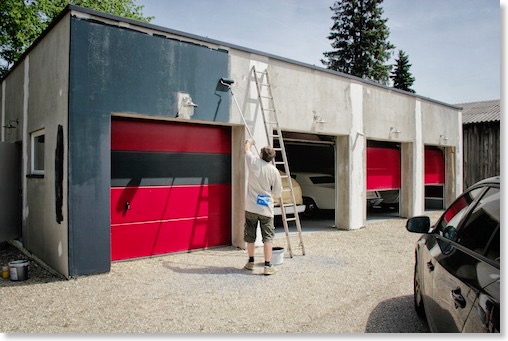
I started painting with the first coat of dark grey.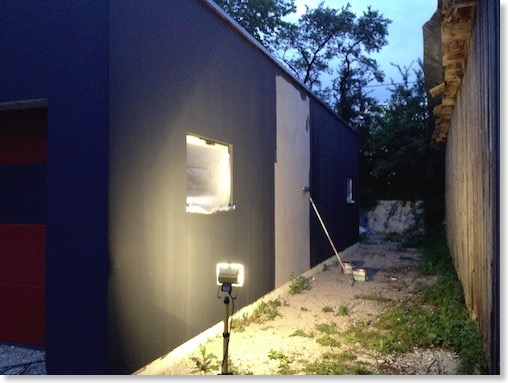
I even did some paint work during the night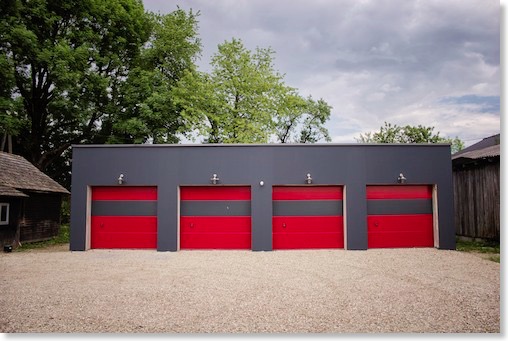
After the first coat of paint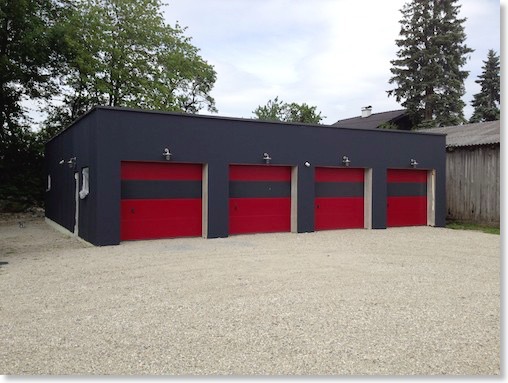
Still a lot to do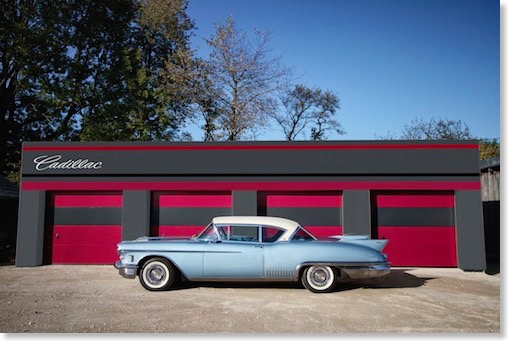
This is how the garage should look like once it is finished
My friends and I bought a 1980 Biarritz.
Also the trunk is full of parts for this car - the major issue is rust around the vinyl roof.
Best thing is that it cost us almost nothing.

The Biarritz is still drive-able - but the body is very rusty. The technical condition its pretty good though.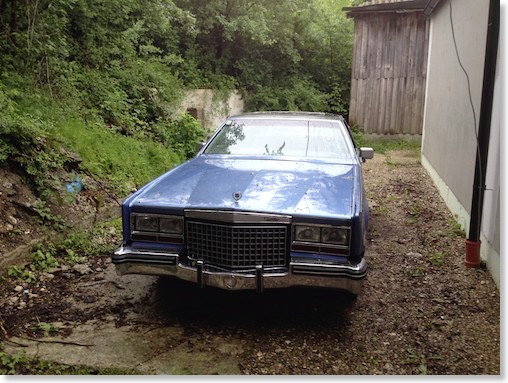
It's resting behind the garage at the moment. Will try to build a shelter for it.
Correcting the paint of the Lincoln Mark III.
I even had the car at a professional detailer to have some of the paint corrected - but he gave up and said that there is nothing he could do for me as the paint would be too soft...
The paint really is very soft, and you could even make swirl marks with a soft microfiber towel...
The detailer left some wet sanding marks behind on the trunk lid, which were a big sore in my eyes.
So I decided to correct the paint by myself.
I bought the best dual action polisher on the market - the Rupes BigFoot 21. This is a professional machine which can correct all serious paint defects and bring the paint back to perfect condition. It takes some practice to do it correctly, but its not very difficult to do. I can't recommend this polishing machine enough!
See my previous post to check out the correct technique.
I also bought the complete Rupes foam pads, compound and polishes system, and the results are amazing.
The swirled and scratched paint came out like a mirror!
I´m very happy with the outcome.
I also did some touchups on some small stone chips and wet sanded some areas.
You can see the before and after pictures below.
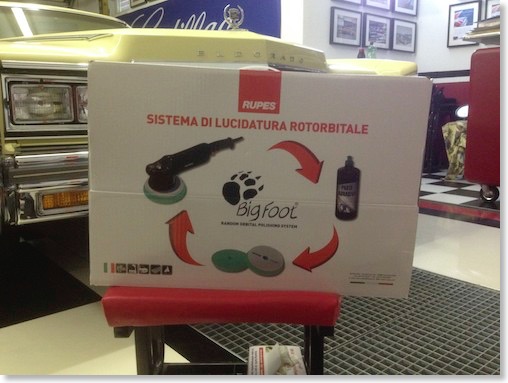
I finally bought a professional polishing machine. The Rupes BigFoot 21. It's a great and very effective tool!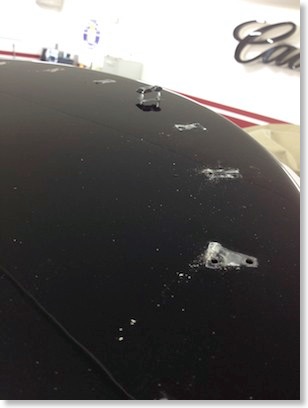
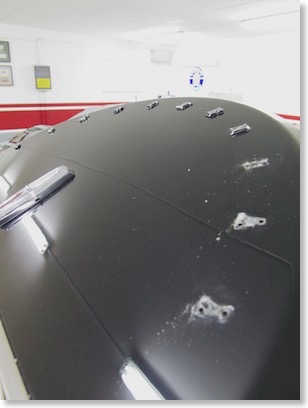
I removed the CONTINENTAL letters to be able to polish the hood better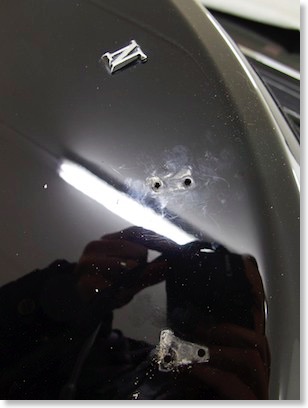
Look at all the fine swirls and scratches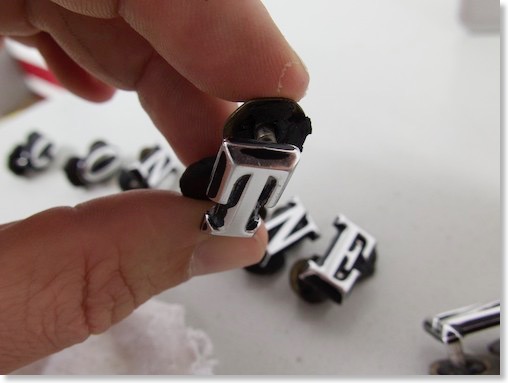
I will also restore the letters, as some of the black paint has polished off over the years...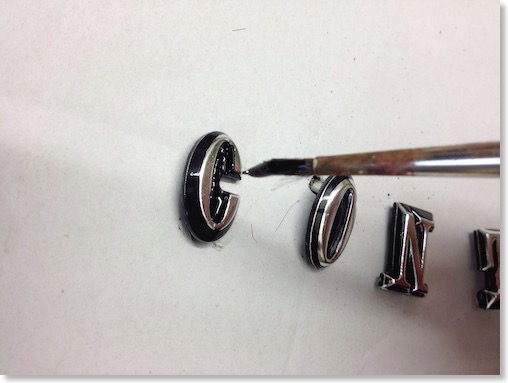
Repainting the letters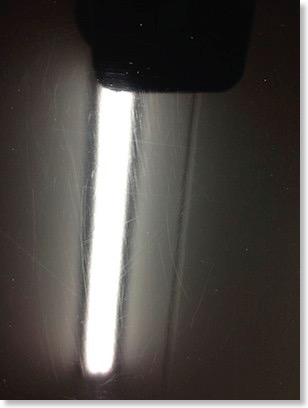
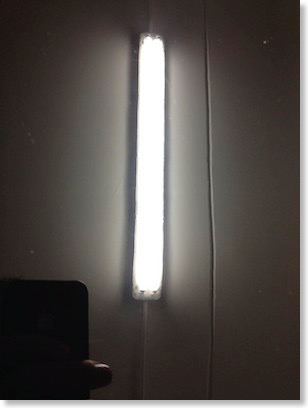
The paint before and after polishing - as you can see all the imperfections are gone.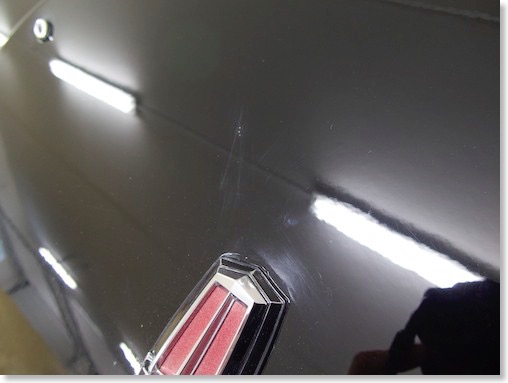
You can see all these fine scratches and haze and some wet sanding marks that were left behind from the professional detailer.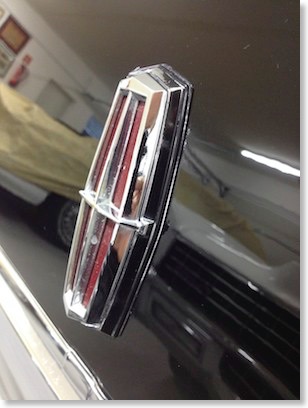
All scratches and imperfections are gone after polishing!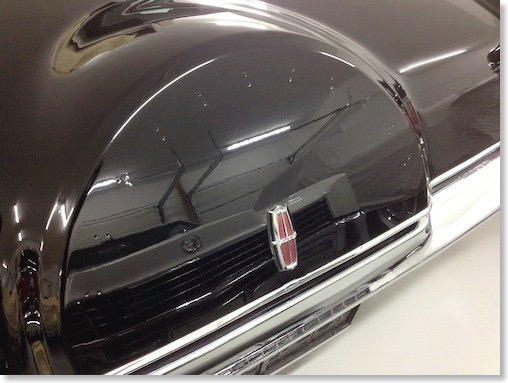
The Mark III looks spectacular after the paint correction. I have to reinstall the restored letters now.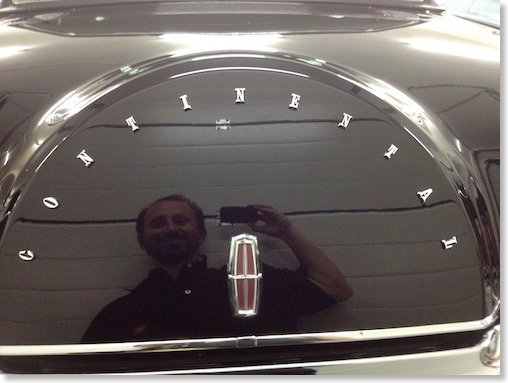
The restored letters are back on the car. As you can see I´m very happy with the result.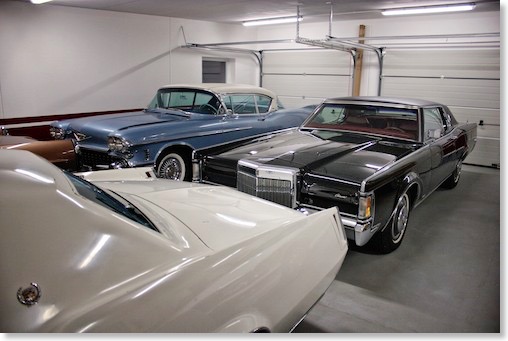
The polished car
The 1974 Coupe deVille has arrived.
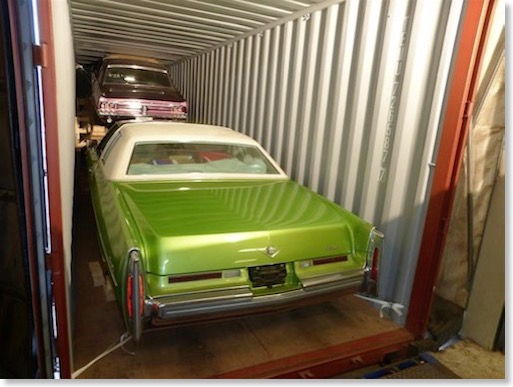
This is how it was transported from New York to Rotterdam inside a container
The 74 rode on top on the last leg of its journey
After its first shower inside my garage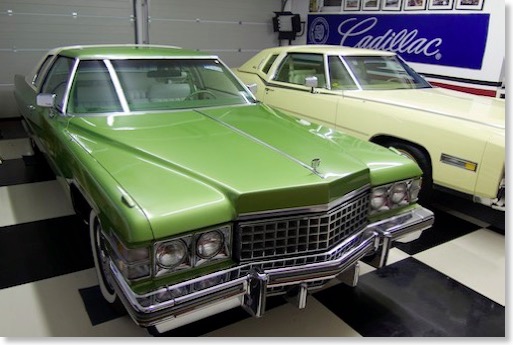
The 70s Cadillacs in my garage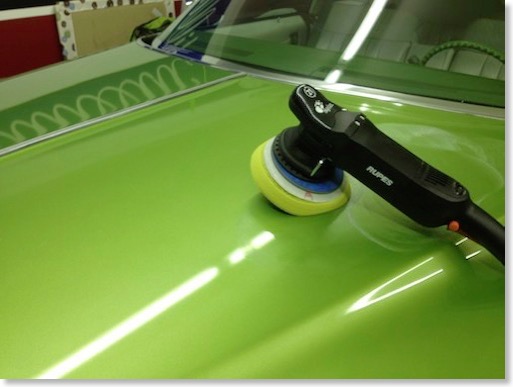
I will polish the paint to perfection soon. Did a little test spot and it came out great.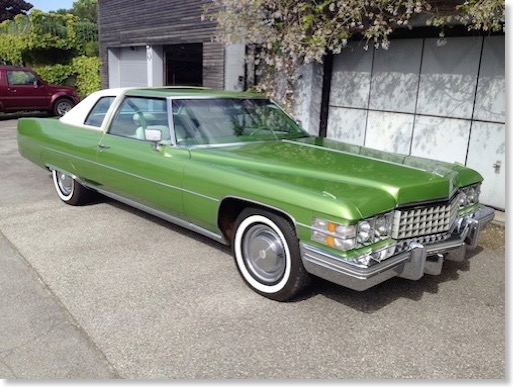
The car is still waiting for full detailing - too many projects at once ;-)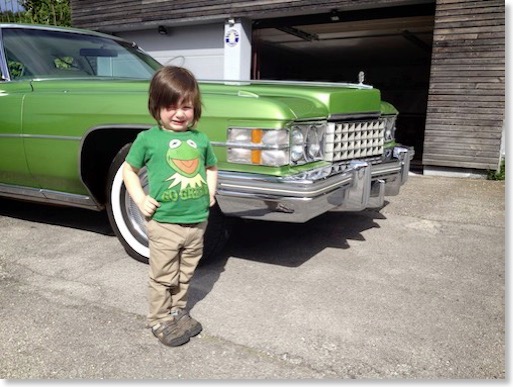
My little son Elliot likes green cars ;-)
A fantastic 1966 Coupe deVille is coming! Time capsule!
The car is all original - including original paint and is in very good mechanical condition as well. It has most of the available options that were offered in 1966.
Its very rare to find a Coupe deVille without a vinyl top. It also has the ultra rare and very expensive bucket leather seats with center console. The car comes from a Cadillac Collector and was pampered its entire life. The mileage is fully documented and accurate. I´m a big fan of the “Antique gold metallic" paint and the black leather interior is absolutely stunning.
Can´t wait to see the car in real life in about 10 - 12 weeks after it has crossed the Atlantic.
More details and pictures will follow once the car is in my garage.
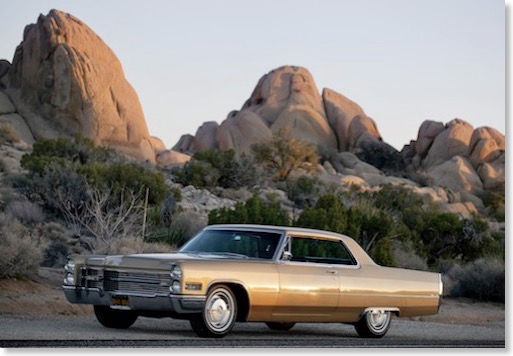
This picture was taken in Joshua Tree National Park by the previous owner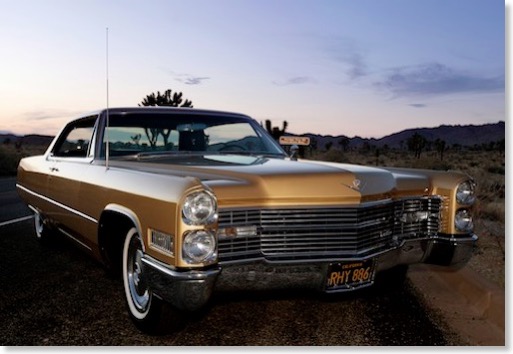
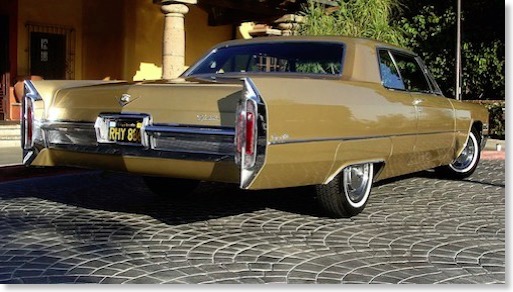
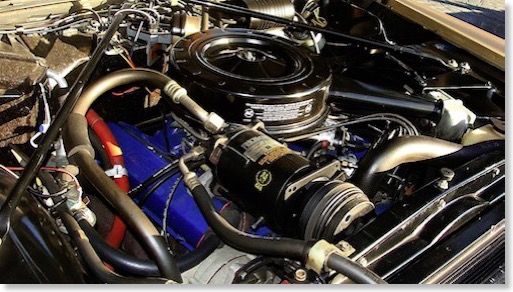
Very nice and clean engine bay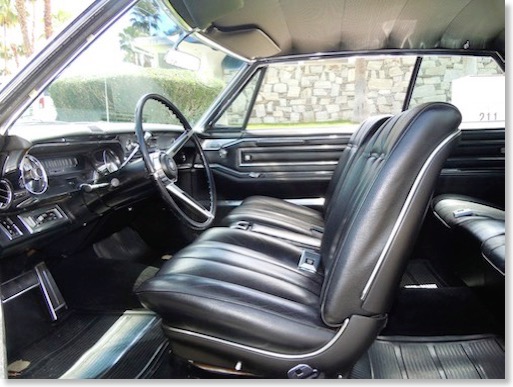
Ultra rare leather bucket seats with center console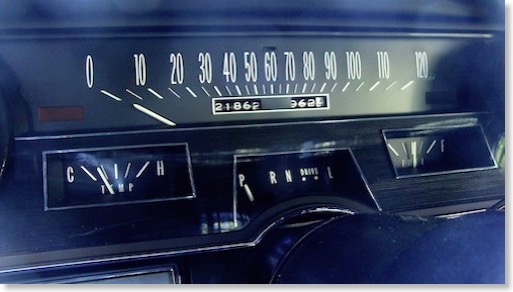
very low mileage
A super nice 1974 Persian Lime Coupe DeVille is on its way to my garage!
This is a car in spectacular Persian Lime, with white leather interior.
More details will follow once the car has arrived here in Europe by the end of May 2014.
I hope it will have a safe journey across the Atlantic! It will leave the USA via New York.
Check back soon for more info and pictures!
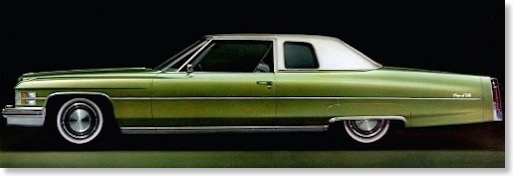
The 1974 Cadillac brochure picture...
... and the car in real life - yes this is still the original paint - it looks spectacular!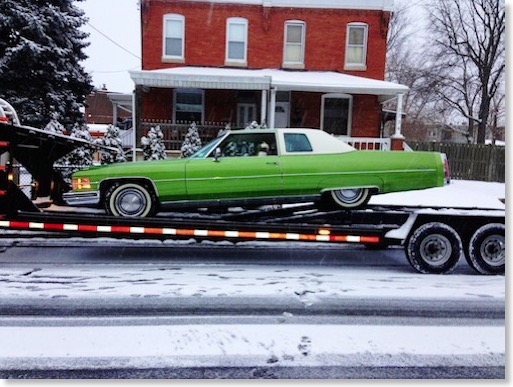
During pick up in Philadelphia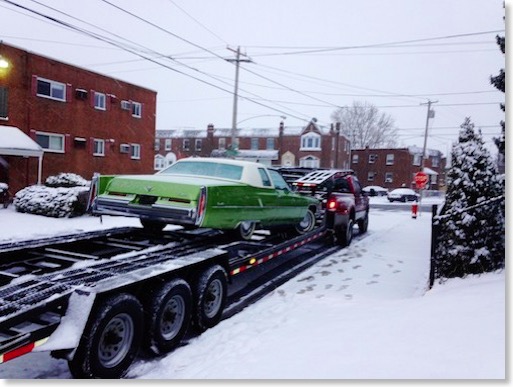
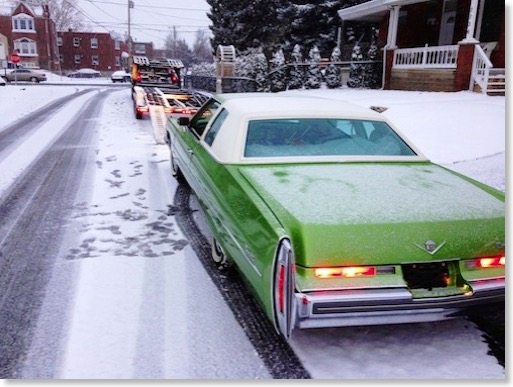
Detailing the paint of my 1978 Biarritz.
My goal is to make this mint car as good as it can get, while keeping everything as original as possible.
I´m really obsessed with cleanliness when it comes to cars... Everything has to be completely detailed and shining like new.
I completely cleaned the entire engine and gave it a good wash and afterwards applied some engine dressing.
I then removed some screws and small parts which were left unpainted by the factory, like some screws, the hood latch, some brackets and some other smaller parts. Of course these parts developed some slight surface rust during the last 36 years...
As I had no real rust dissolver at hand, I soaked the rusty parts in vinegar over night, which completely removed all the surface rust. I then gave these parts a coat of primer and painted them with Eastwood paint, which looks like bare metal.
With this method I can keep the rust away, while the parts still look original. Only if you look very closely you might see that these few parts are now painted...
I then started to bring the original single stage paint back to like new condition.
I used a couple of Meguiars compounds and polishes to make the paint as smooth as possible. I had to carefully wet sand some of the deeper scratches with 2000 grit paper. Be very careful when doing this as the single stage paint was applied in only VERY thin layers during the 70s.
The car now shows almost no more paint imperfections and the swirl marks are gone. The original paint looks like on a new car now and is extremely shiny. When the car is out in the sun its almost blinding.
I sealed the paint with Meguairs #16 wax.
I used a Meguiars DA polisher (G125) for the paint correction work - which is not really that good, but I would like to have a more powerful machine for the future like the Flex 3401 or the Rupes Bigfoot .
I used the procedure explained in the following video for my paint correction:
Download his description as PDF file here
This gentleman, Larry Kosilla, has a lot more awesome video tutorials for people who love detailing their cars. Check him out!
I also started detailing the interior of the car. I treated the leather with Gliptone Leather Conditioner - which is the best conditioner I have tried so far. It really makes the leather very soft.
I´ll have to steam clean the carpet once its really warm outside so that it can dry fast afterwards.
I also cleaned the undercarriage a little and removed some of the factory applied undercoating from components where it does not belong to, on which they sprayed it on very carelessly at the factory. Looks much better now.
The car really looks spectacular already - I´ll continue with the chrome and stainless steel trim now. It should be shining in fully glory for the 2014 season beginning in May and also be ready for various car shows, especially the Cadillac BIG Meet in August.

My weapons of choice came from the Meguiars dealer...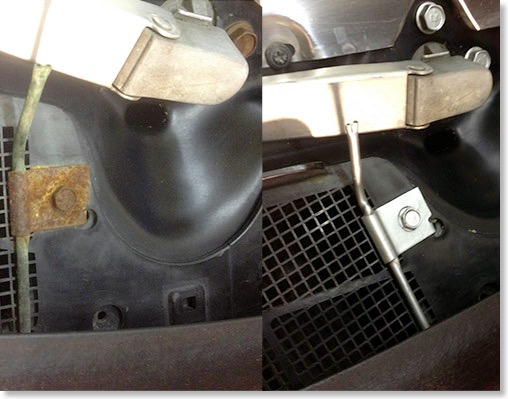
before and after cleaning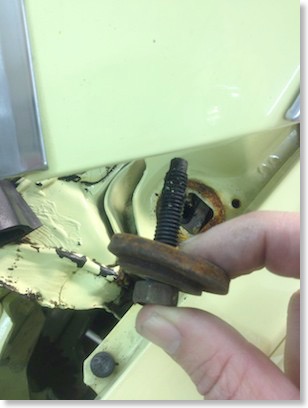
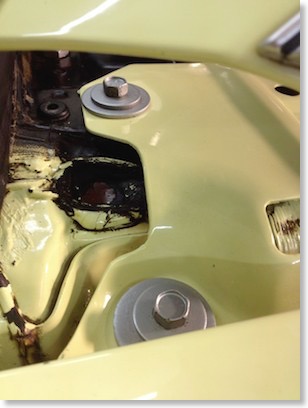
rusty bolts before and after cleaning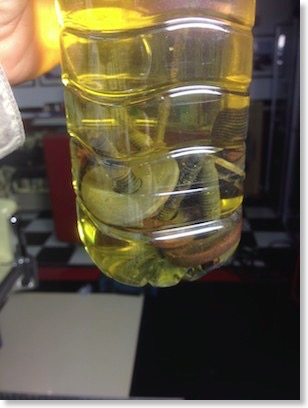
Soaking rusty parts in vinegar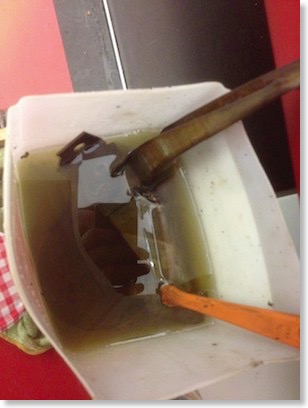
Cleaning more rusty parts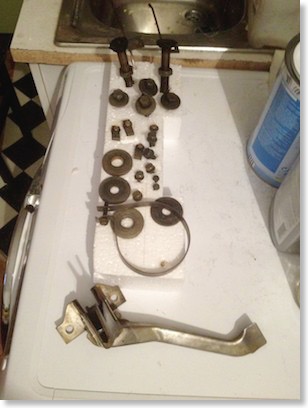
with the rust removed
The Hood latch cleaned and painted with Eastwood Silver Cad Paint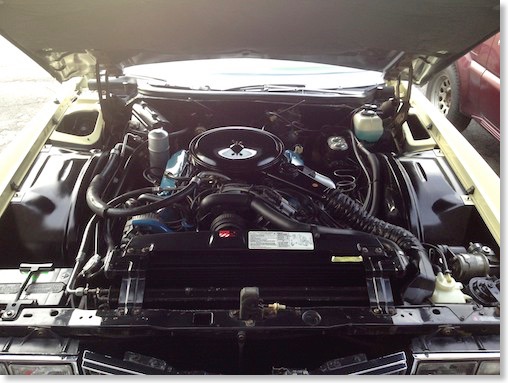
The cleaned engine bay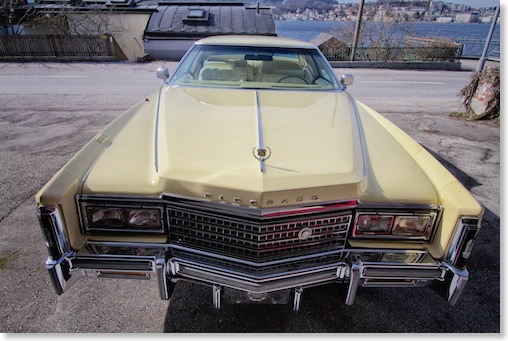
The car after polishing the paint
the polished paint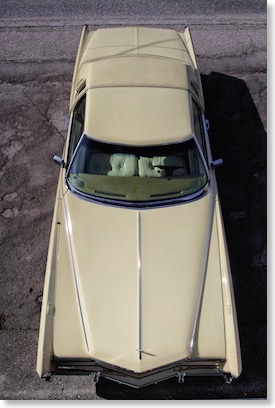
very shiny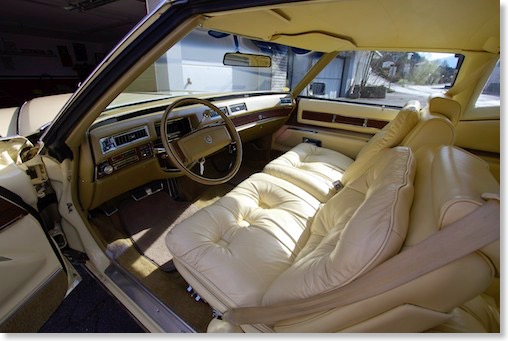
Besides the carpet - the interior is already perfectly clean. The original floor mat is under the aftermarket mats.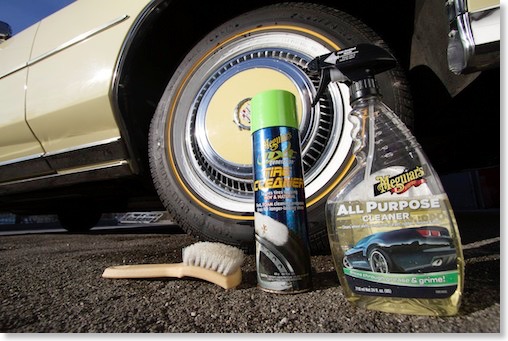
Cleaning the Vogue tires.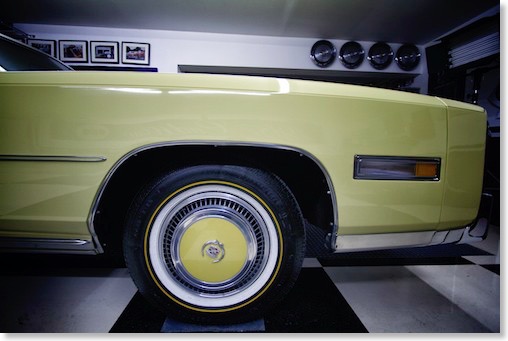
Clean paint and tires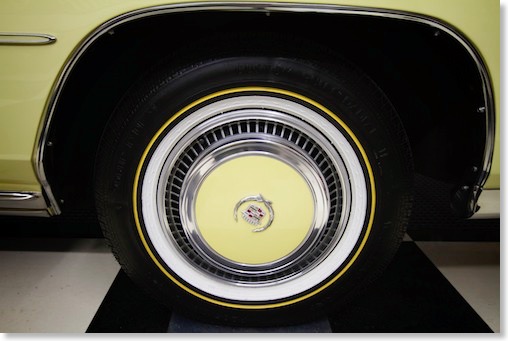
Clean tires and perfect hubcaps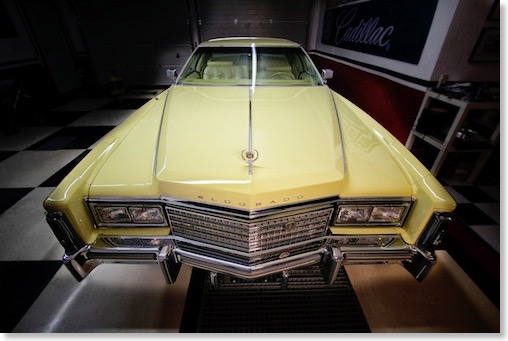
Before waxing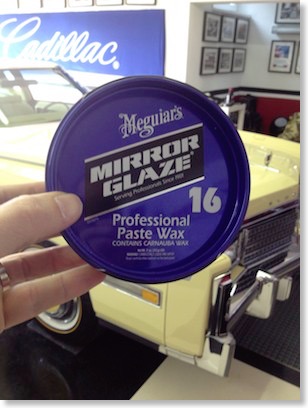
I really like this Meguiars wax. Its one of their cheapest but best waxes. A gentleman from Meguiars once told me that it is one of their oldest waxes, but contains a lot of carnauba wax, which makes it so good! Its also offering the best protection of their product range.
Here are some links to Meguiars products I like to use (link to german Amazon Shop):
Decorating the garage.
1978 Eldorado - Choke problems.
The only way I could get it to normal idle speed was to manually release the fast idle cam on the carburetor. For some for me unknown reason it did not release itself - even when the car was fully warmed up...
As I´m not exactly an expert when it comes to carburetors, it took me a while to figure out what was going on and what the problem could be.
I got myself the Rochester M4MC / M4ME Carburetor Manual online and started reading. The trouble shooting section did not mention my problem and symptoms though, at least I learned a lot by reading through the manual...
The carburetor in my 1978 Eldorado is a Rochester M4ME # 17058531 (late Federal).
After a lot of reading I suspected that the electric choke thermostat must be the problem.
I removed it to test it like it is described in the manual.
Electric Choke Diagnosis and Checking
In order to have good engine performance during warm up and be able to pass Federal exhaust emission standards, the electric choke must function properly .
Possible reasons for the choke not operating properly are listed below.
1. No engine oil pressure.
2. Malfunctioning oil pressure switch.
3. No current to oil pressure switch due to:
a. Burned out 15 amp "radio -idle stop" fuse.
b. Broken wire to switch (18 brown/double white).
4. No current between choke coil and oil pressure switch due to:
a. Broken 18 light blue lead wire.
b. Wire terminal not locked on coil terminal.
c. Ground circuit incomplete between grounding plate of choke assembly and housing.
5. Failed choke coil assembly.
A voltmeter or continuity light may be used to check the circuits for continuity to the oil pressure switch and the choke coil.
If it is suspected that the choke coil assembly has failed, the following check may be made.
1. Remove coil from carburetor and cool to room temperature (above 60°F).
2. Attach a jumper wire between positive battery terminal and terminal of coil assembly. Attach a second jumper wire between negative battery terminal and grounding plate of choke coil assembly.
3. The tang of the coil should rotate 45°in 54 to 90 seconds.
4. If coil fails to rotate or exceeds the above timing specification, replace coil assembly.
5. If coil is within above timing specification then coil is good and problem is elsewhere.
6. Reinstall coil and set to proper index (Fig. 52).
If coil is cooled off sufficiently the choke valve will close when throttle is opened slightly. Attach a jumper wire between the positive battery terminal and choke coil terminal. Choke coil should warm up and the choke blade can be observed opening, indicating a good and properly grounded choke coil assembly. At room temperature the choke blade should be wide open in approximately 90 seconds.
If the choke does not operate properly after the coil has been proven satisfactory , check out the other possibilities that prevent current from getting to the choke coil.
After I performed the test procedure above it was clear that the choke coil was the problem.
I ordered a new one from www.rockauto.com and it arrived within 3 days. The manual mentions the original part #17059968 (the original one on my car showed #17059969 though - but every parts list I checked does not list this number...?).
I got a replacement from Airtex # 2C1045 and it seems to fit.
I installed it today and the choke works as it should again.
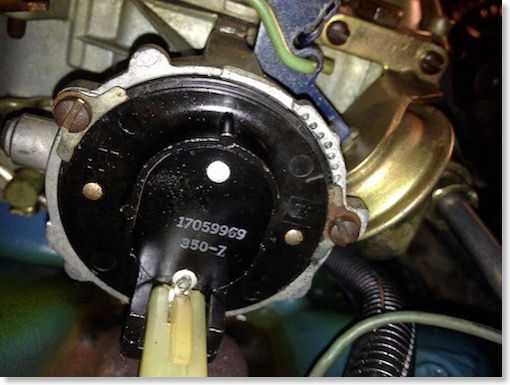
This was the original choke thermostat on the car . #17059969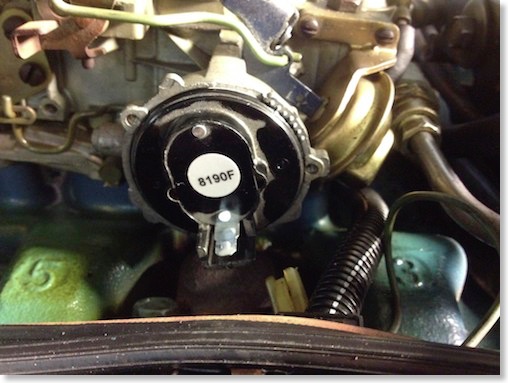
The Airtex replacement part in the car.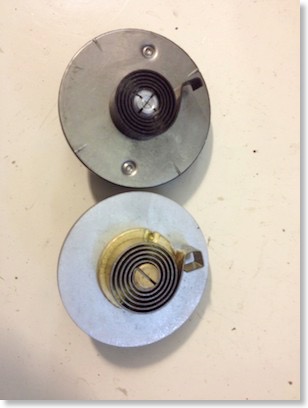
The original part and the new part - slightly different at the tang of the spring - but it works and fits perfectly...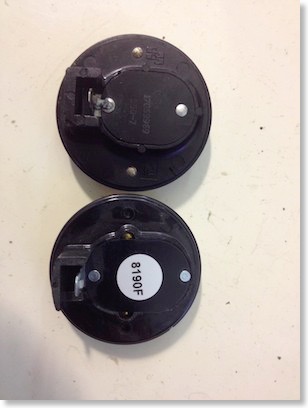
original and new part
The Airtex replacement choke thermostat
1978 Cadillac Eldorado - defective door jamb switch repair.
I also have the same system on my 1971 Lincoln Mark III where I had some problems as well in the past with a loose wire.
On the Biarritz the passenger side worked flawlessly, but on the drivers side the solenoid would not engage.
I started my search for the problem at the top of the two door jamb switches which is the one controlling this function.
When I wiggled it and pulled it out, I could hear the solenoid engage. So I knew that the problem must be with this switch.
Unfortunately it's not easily accessible. As I do not have the 1978 shop manual yet - it took me a while to figure out how to access it.
I managed to get to it through the lower dash and to uninstall it.
As it turned out it was slightly bent and did not make good contact once the door was opened.
I carefully bent it back straight - and after some trial and error it was back in working order.
It took me a good hour to fix this.
Now I´m back to cleaning the car to my standards, something that will probably take the whole winter...
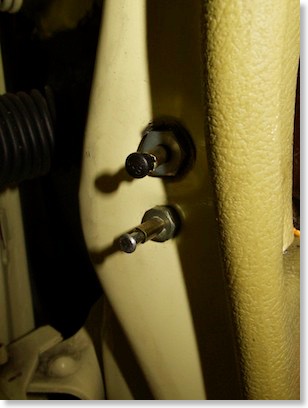
The upper switch is controlling the seat back solenoid. (Picture was taken before cleaning the door jambs...)
The removed door jamb switch. When the door is closed no contact is made and the solenoids are not energized causing the seat back to be locked in position.
You can see that the switch was slightly bent - making no good contact.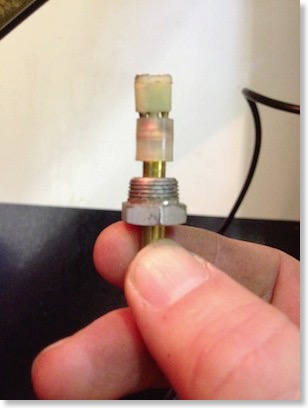
When the door is open contact should be made and the solenoid should energize... The switch did no longer make a good contact though.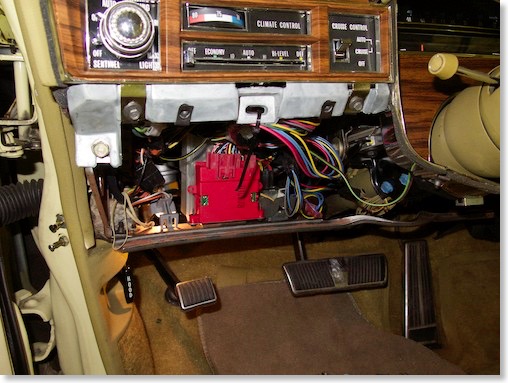
I had to remove the lower dash to access the cables on the rear of the door jamb switch through a tiny hole and disconnect the connector with a long nose plier...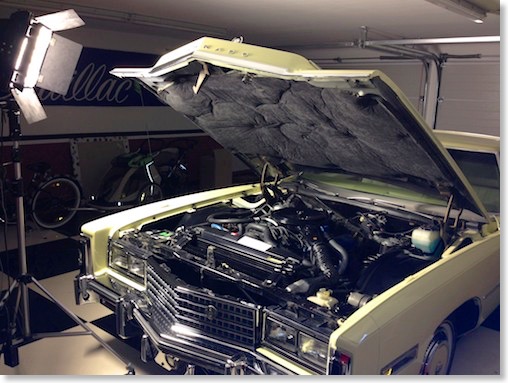
I´m now in the long process of thoroughly cleaning the engine bay to look like new again...
My 1967 Eldorado Article in the German Cadillac Club Magazine.
The Cadillac Club of Finland will also feature this article in one of their next club magazines.
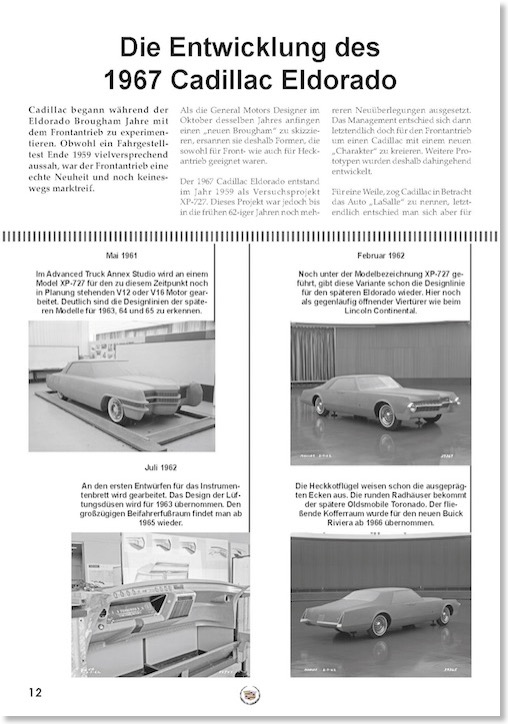
The first page of the article © "Der Standard"
1966 Cadillac Coupe deVille (16)
1967 Cadillac DeVille (54)
1967 Cadillac Eldorado (73)
1971 Lincoln Continental Mark III (24)
1974 Cadillac Coupe deVille (46)
1978 Cadillac Eldorado Biarritz (25)
1996 Buick Roadmaster (20)
Cadillac BIG Meet (2)
Car Shows (55)
Cruising (4)
CT6 (1)
For Sale (3)
Garage Stuff (32)
Pacer (1)
Restoration (140)
Various (55)
Video (20)
Website News (31)
- 6 way power seat
- 8-track
- 10 Ohm
- 429
- 1932
- 1957
- 1958
- 1958 Cadillac Eldorado Seville
- 1958 Cadillac Repair Tip
- 1959 Cadillac Eldorado Seville
- 1964
- 1965
- 1966
- 1966 Cadillac Coupe deVille
- 1966 Cadillac Repair Tips
- 1967
- 1967 Cadillac DeVille
- 1967 Cadillac Eldorado Repair Tip
- 1967 Cadillac Repair Tip
- 1967 Eldorado
- 1968
- 1970 Cadillac Eldorado
- 1971
- 1971 Lincoln Continental Mark III
- 1974
- 1974 Cadillac Coupe DeVille
- 1974 Cadillac Repair Tip
- 1976
- 1977
- 1978
- 1978 Cadillac Eldorado Biarritz
- 1978 Cadillac Repair Tip
- 1980 Cadillac Eldorado Biarritz
- 1996
- 2012
- 2014
- 2017
- 2018
- 2019
- 2022
- 2023
- 2025
- 3063206
- 7027235
- 7800483
- 7805675
- 7805676
- 12355706
- 17058531
- 17059968
- 17059969
- 22010515
- 22010661
- A.I.R
- A6
- AC
- AC Compressor
- AC Electrical Diagram
- ACC
- Accelerator Pump
- Accelorator pump
- Accident
- Actuators
- Adriatic Blue Metallic
- Ads
- Aftermovie
- Air Pump
- Aircondition
- AIRPUMP
- ALC
- Alternator
- AM
- AM-Transmitter
- Antenna
- Anti Rattle Clips
- Antique Gold
- Arizona Vintage Parts
- Arrival
- Article
- ASC
- Ash Tray removal
- ATC
- Atlantis Blue Firemist
- Austria
- Austro Classic
- Autolite SP-459
- Automatic Seat Back Release
- Award
- Banner
- Barn Find
- Battery
- Battery Tray
- Beach Race
- Bearing
- Bendix
- Biarritz
- Bigfoot
- Bill Hirsch Engine Enamel
- Bleeder Screws
- Bleeding
- Blower
- Bodywork
- Bolts
- Book
- Borg
- Brake Booster
- Brake Fluid
- Brake Gray
- Brakes
- Broken Bolt
- Brougham
- Bucket seats
- Buick
- Bumper End
- Bushings
- Cadillac
- Cadillac BIG Meet
- Cadillac BIG Meet
- Cadillac birthday cake
- Cadillac Blue
- Cadillac Color Selections Dealer Book
- Cadillac Coupe deVille
- Cadillac Dealer
- CADILLAC GRAND EUROPEAN
- Cadillac Meeting
- Cadillac Mini Meeting
- Camaro RS
- Caorle
- Car Show
- Carburetor
- Card
- Carpet
- Carter AFB
- Cavalry Twill Vinyl
- CB
- CBM
- CCCD
- Choke
- Christmas
- Citizens Band
- Classic Cadillac Club Deutschland
- Clay Towel
- Cleaning
- Clock
- Clockwork
- Clutch
- Clutch Coil
- Collector
- Colonial Yellow
- Color Coded Springs
- Commercial
- Compound
- Compressor
- Condenser
- Continental Mark III
- Control Head
- Conversion
- Convertible top
- Coolant
- Corona
- Cowl
- Cruise Control
- Cruising
- CT6
- CV Boots
- CV JOINTS
- D6230
- Dash Trim
- Decal Removal
- Decals
- Decoration
- Dehumidifier
- Delco Moraine
- Der Standard
- detailing
- Deville
- Diagnosis Chart
- Diagram
- Dial
- Digital Rotary Drum Clock
- Diner
- Disc Brakes
- Distributor
- Diverter Valve
- Door Jamb Switch
- Door Rubber Conduit
- Dornbirn
- Dot3
- Drive Shaft
- Driving tour
- Drum brakes
- Dry Ice Blasting
- Dry Ice Cleaning
- DVD
- Eastwood
- Eldorado
- Electric Choke Thermostat
- Electrical schematic
- Elvis
- Engine Bay
- Ep
- Epoxy floor
- Europe
- Evaporator
- Exide
- Factory Markings
- Fender Skirt
- Floor
- Flushing
- Flyer
- Foam
- For Sale
- Front AXLE
- Front brakes
- Front bumper filler
- Front Floor
- Front wheel bearing
- Fuel Filter
- Fuel Pump
- Fuel Sending Unit
- Fusible Link
- Garage
- Garage Cabinets
- Gasket
- GE
- Gear indicator
- General Time
- Glove box light
- Grand European
- H4
- Haus of Hot Rod
- Headlight Actuator
- Headlight doors
- Headlights
- Heater Core
- Heater Hose
- Heater Valve
- High Idle
- History
- Holley
- Honest John
- Hood
- Hood Emblem
- Hood Ornament
- Hose Clamp
- Hot Choke
- Hot Water Valve
- HotRod
- How to
- Hödlmayr
- Ignition Diagram
- Illuminated Entry
- John D‘Agostino
- John Foust
- Klassikwelt Bodensee
- Kremsmünster
- LaSalle
- Leather seats
- Light Switch
- Limited
- Lincoln
- Lincoln Mark III Repair Tip
- Low Mileage
- Magazine
- Marilyn Monroe
- Mark III
- Master Cylinder
- Master Switch
- Master Vacuum Switch
- Media Blasting
- Meeting
- Meguiras
- MK II
- Mobile
- Model
- Moldings
- Mom
- Mopar Nationals
- Mostkost Kustom
- Movie
- Munich
- Neon
- NOS
- Oberösterreicher des Tages
- oilchange
- ORF
- Overspray
- Pacer
- Paint
- Paint correction
- Paintjob
- Part Number
- Parts
- Patch Panel
- Perfect Circle
- Permabag
- Persian Lime
- Photo shooting
- Photoshooting
- Pictures
- PinUp
- POA Valve
- Power Antenna
- Power Servo
- Power Vent Windows
- Power Window
- Printed Circuit Board
- Programmer
- Pulley
- Quadrajet
- Quarter Panel
- Quartz Conversion
- R134
- Radiator
- Radio
- Rattle
- Rear brakes
- Rebuild
- Recalibrate
- RediRad
- Reed Switch
- Relais
- Relaunch
- Removing Overspray
- Repaint
- Repair
- Restoration
- RIP
- Roadhouse
- Roadmaster
- Rochester
- Rocker Arm Cover
- Rocker Panel Extension Clips
- Rostio
- Rotary Valve
- Rotterdam
- Rupes
- Rust removal
- Rust removal gel
- Sabre Wheels
- Sand Blasting
- Sandblasting
- Screed
- Season Greetings
- Seasons Greetings
- Seat Back Locks
- Seat Padding
- Seat Transmission
- See through ornament
- Self adjusters
- Self Starter
- Sepp's Garage
- Seville
- Sheetmetal
- Shocks
- shop manual
- short
- Sign
- Solenoid
- Spark Plug Wire Routing
- Speakers
- Special Award
- Speed Bleeder Screws
- Splash Guard
- Starter Diagram
- Starter Motor
- Steering Column
- Storage
- suction throttling valve
- sunroof
- suspension
- Swirl Mark removal
- Switzerland
- T3
- Taillight Cover
- Texan´s Choice Award
- Thermostat
- Tilt and Telescope
- Time capsule
- Tomsclub
- Torque Specifications
- Tower Hose Clamp
- Towtruck
- Trailer
- Transducer
- Transmission
- transmission control selector
- transmission control selector indicator light
- transmission shift indicator
- Treadle Vac
- Treffen
- Tri-Band
- Troubleshooting
- Trunk Cardboard Kit
- Trunk lid
- Trunk lining
- Trunk to bumper cover
- Turn Signal Switch
- TV
- Typisierung
- Ultimate Garage
- Underbody
- Undercarriage
- Undercoating
- Undercoating Removal
- Vacuum Booster
- Vacuum diagram
- Vacuum hoses
- Vacuum Master Switch
- Vacuum Schematic
- Vacuum Valve
- Valve Cover
- Various
- Vent Window Switch
- Vibration
- Vibrator
- Vicodec roof
- Video
- Vinegar
- Vinyl Roof
- Visitor
- Washer Fluid Float
- Washer Fluid Low Level Indicator
- Water Pump
- Wax
- Weatherstripping
- Website News
- Westclox
- Wheel Bearings
- Wheel Housing
- Wiesbaden
- Windlace
- Winter
- Wiring
- Wiring Diagram
- Wonderbar
- Workbench
- Zurzach
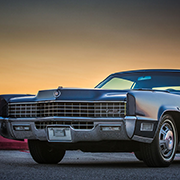 GERALD´S CADILLACS - NEWS
GERALD´S CADILLACS - NEWS